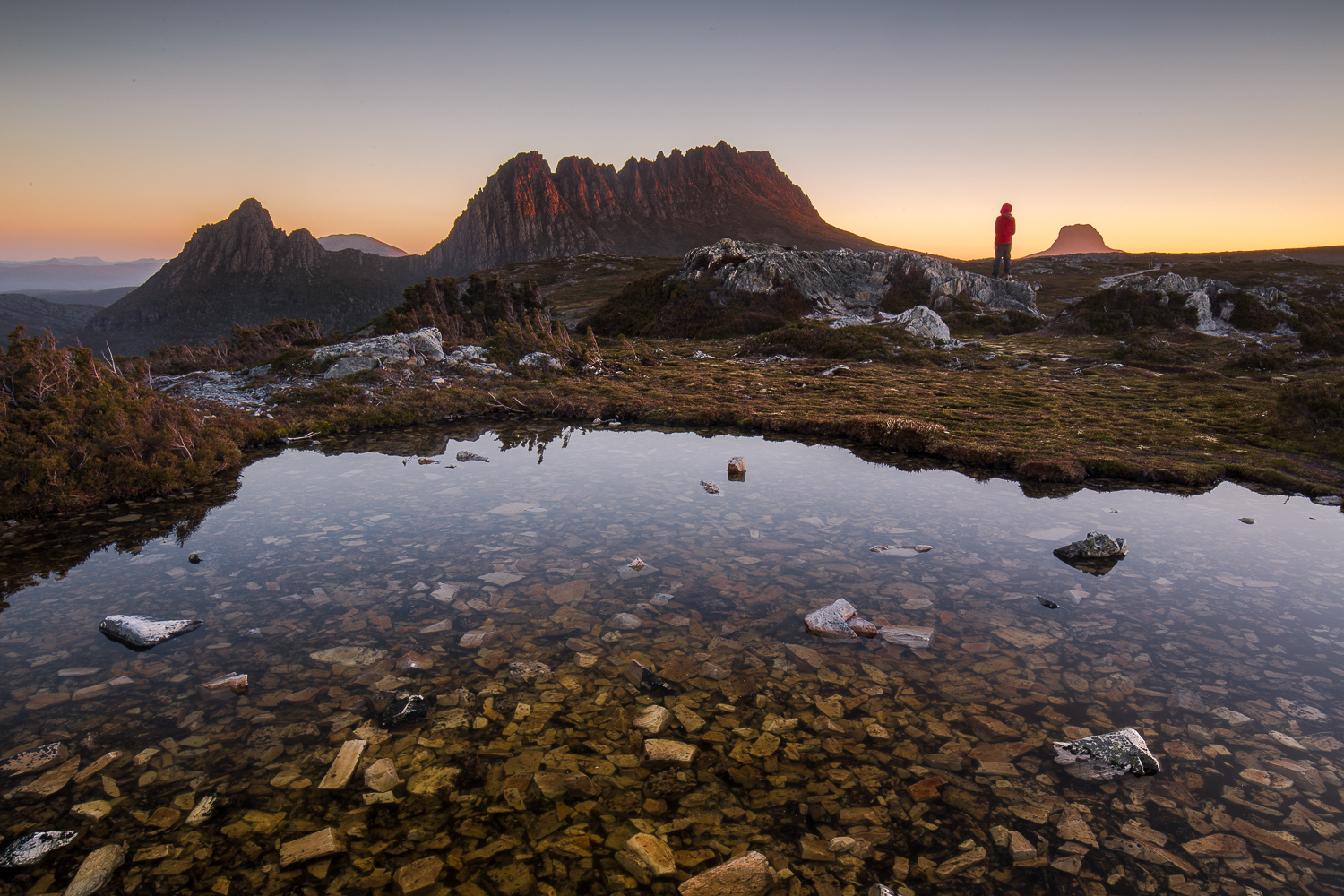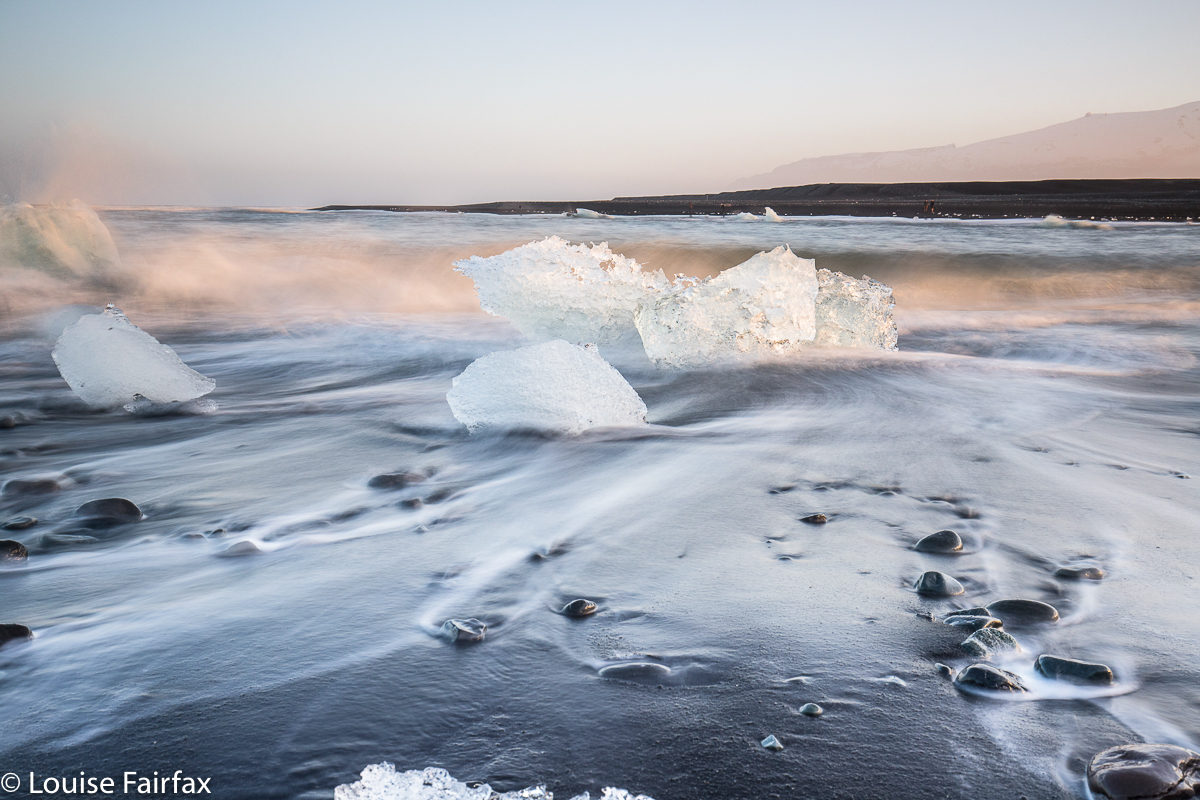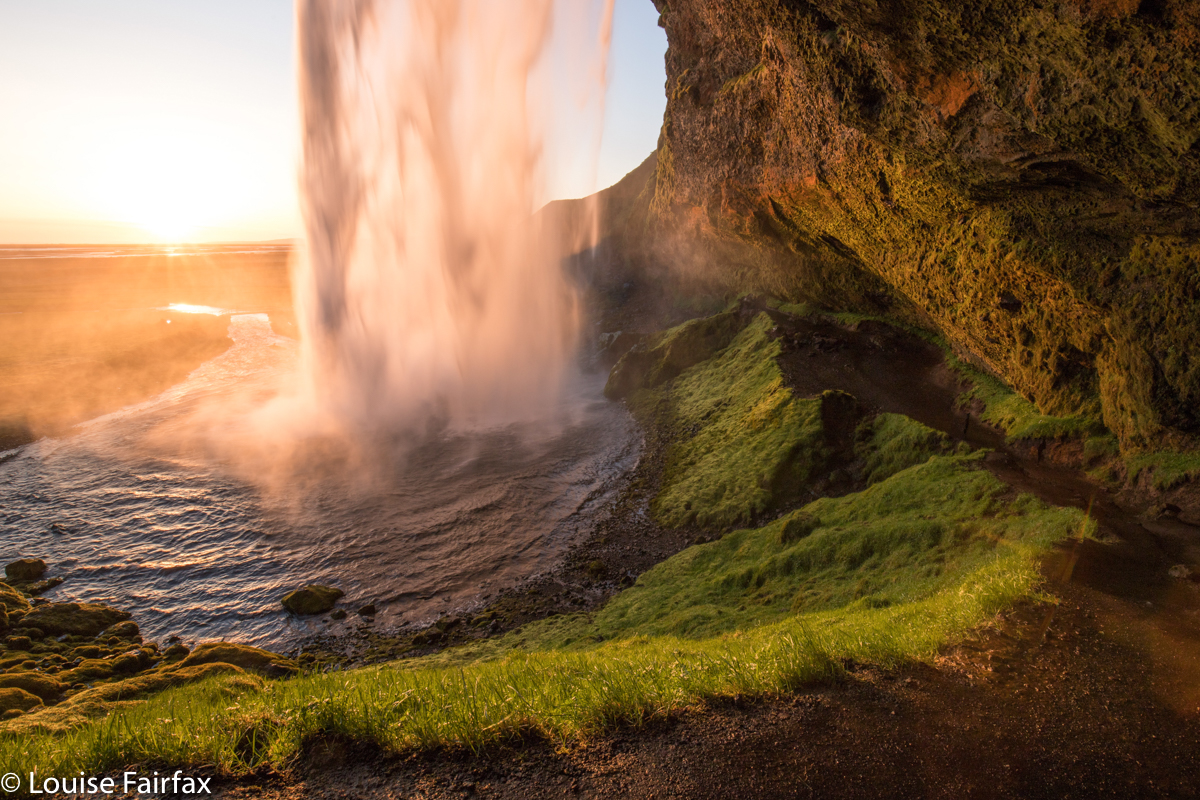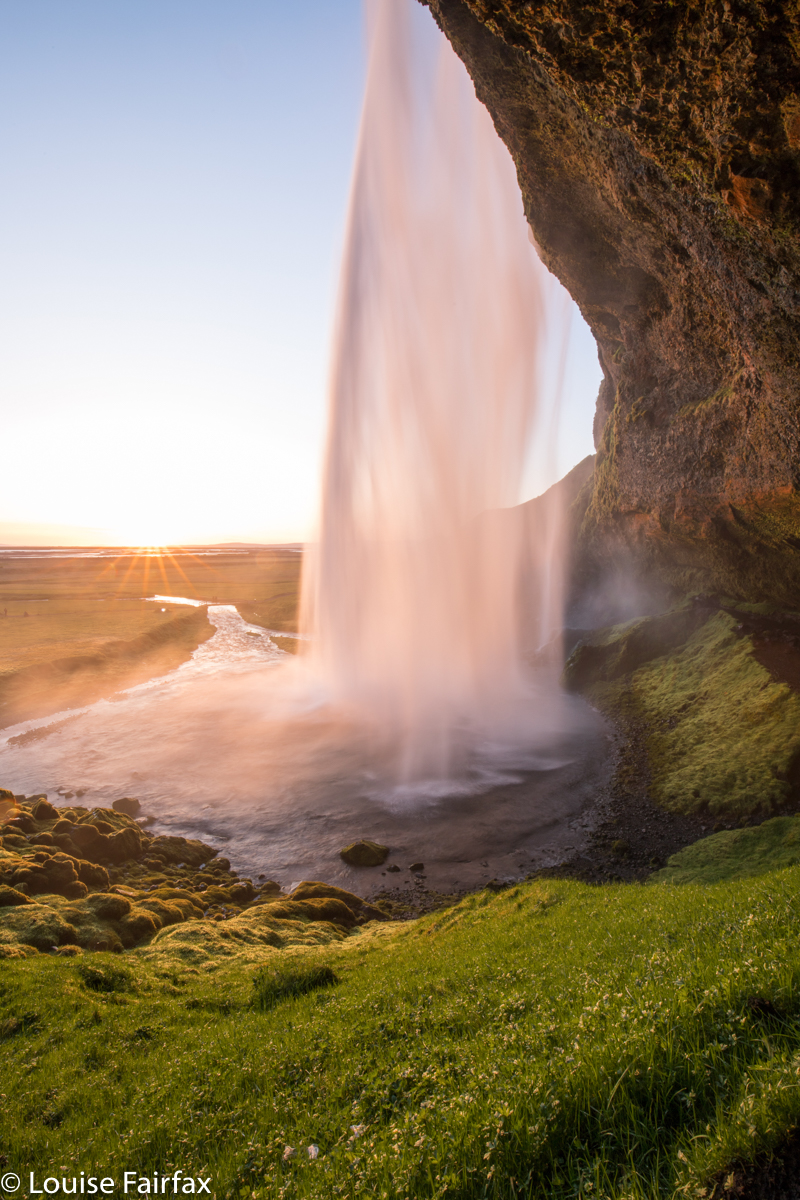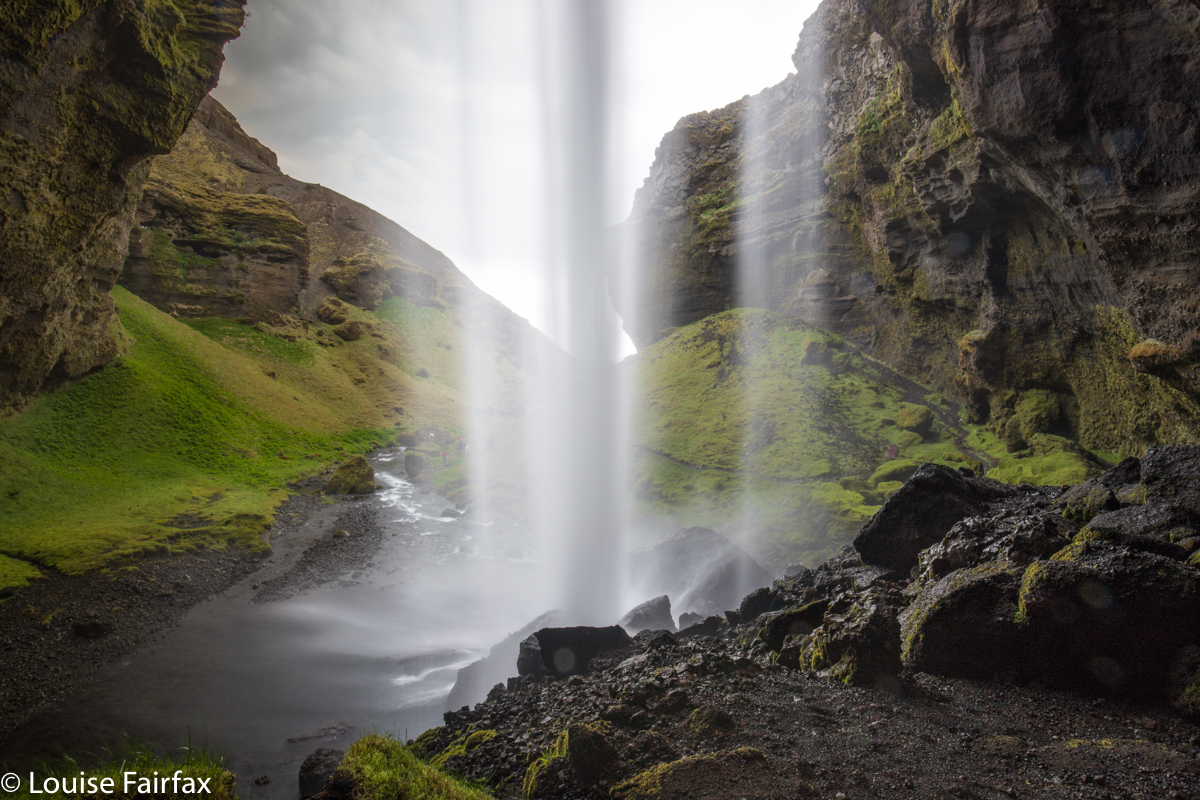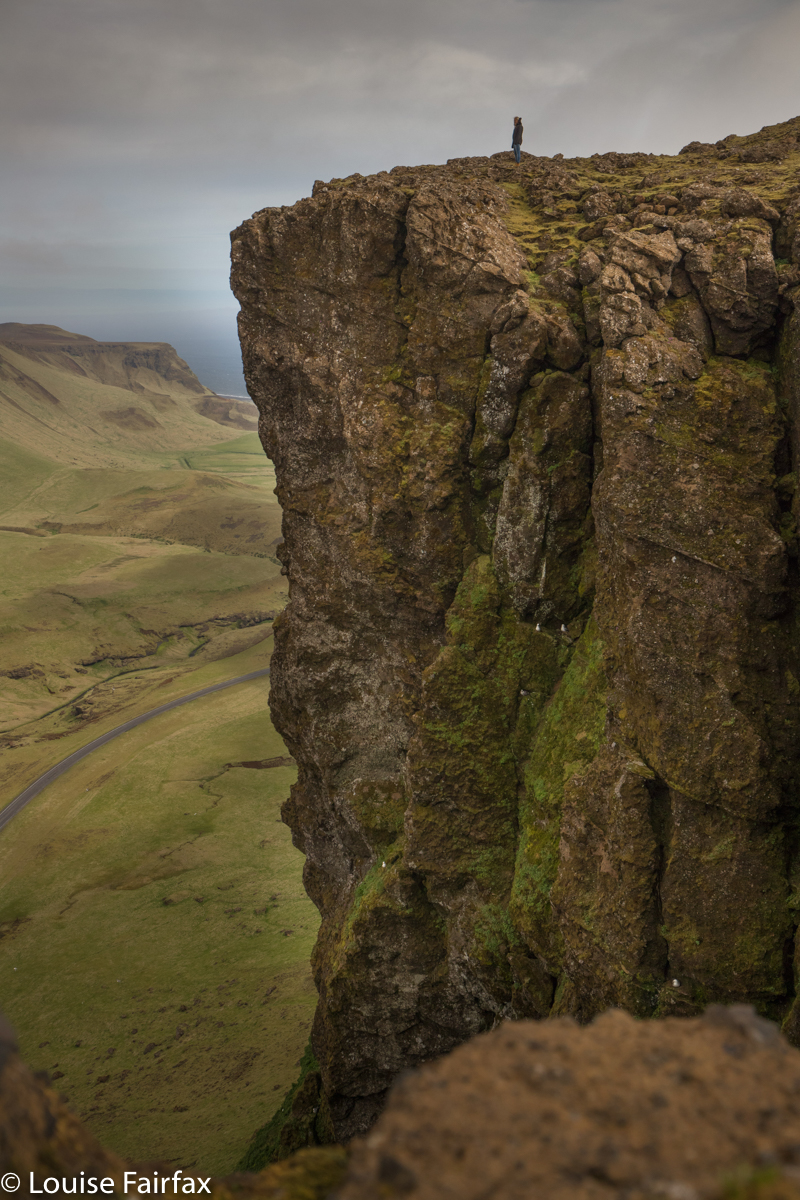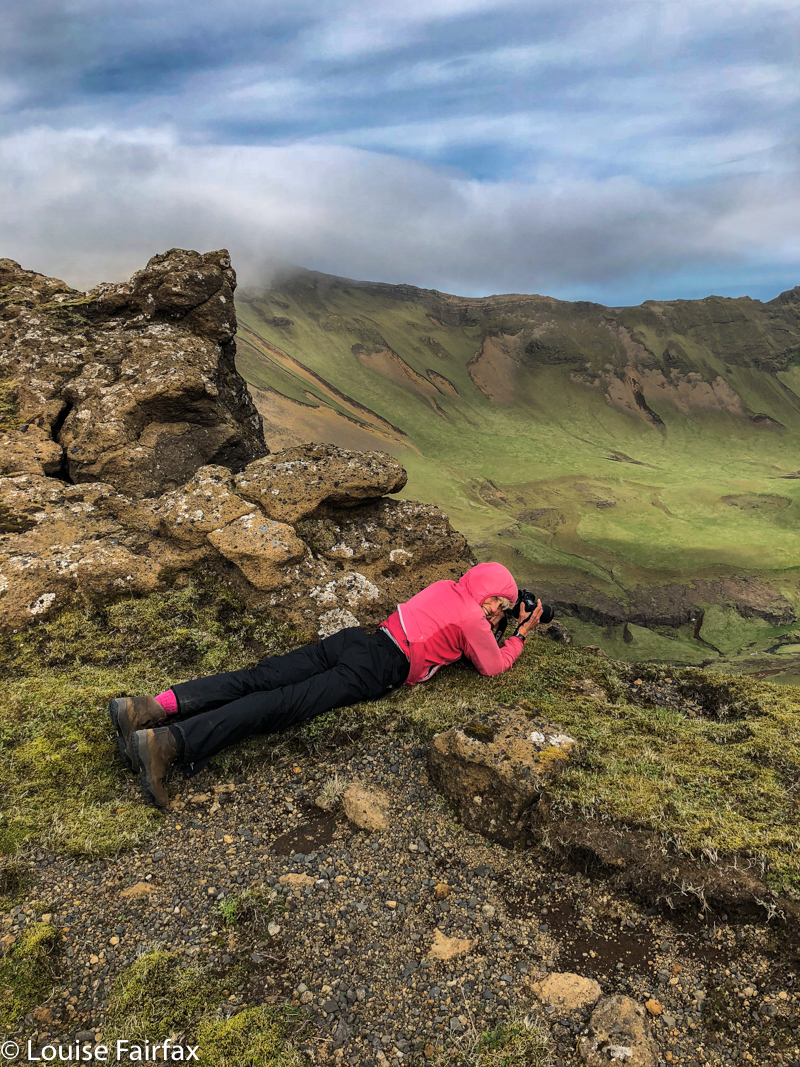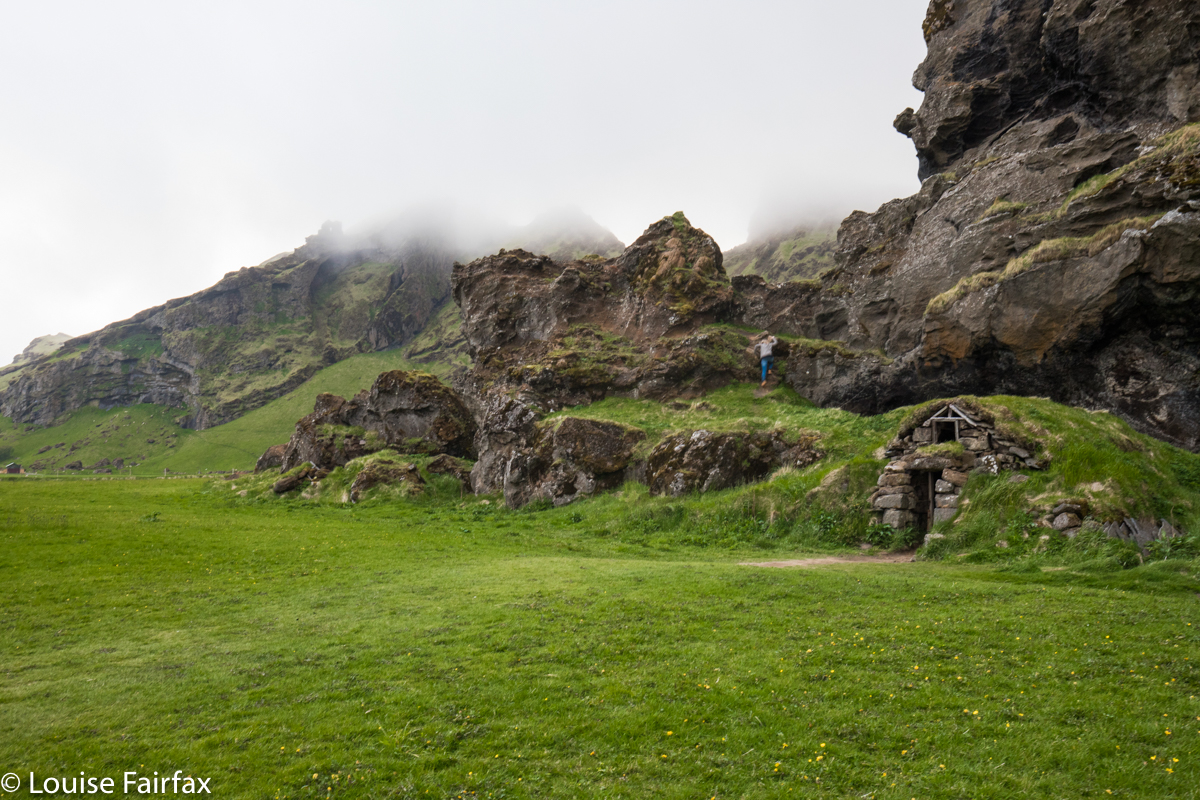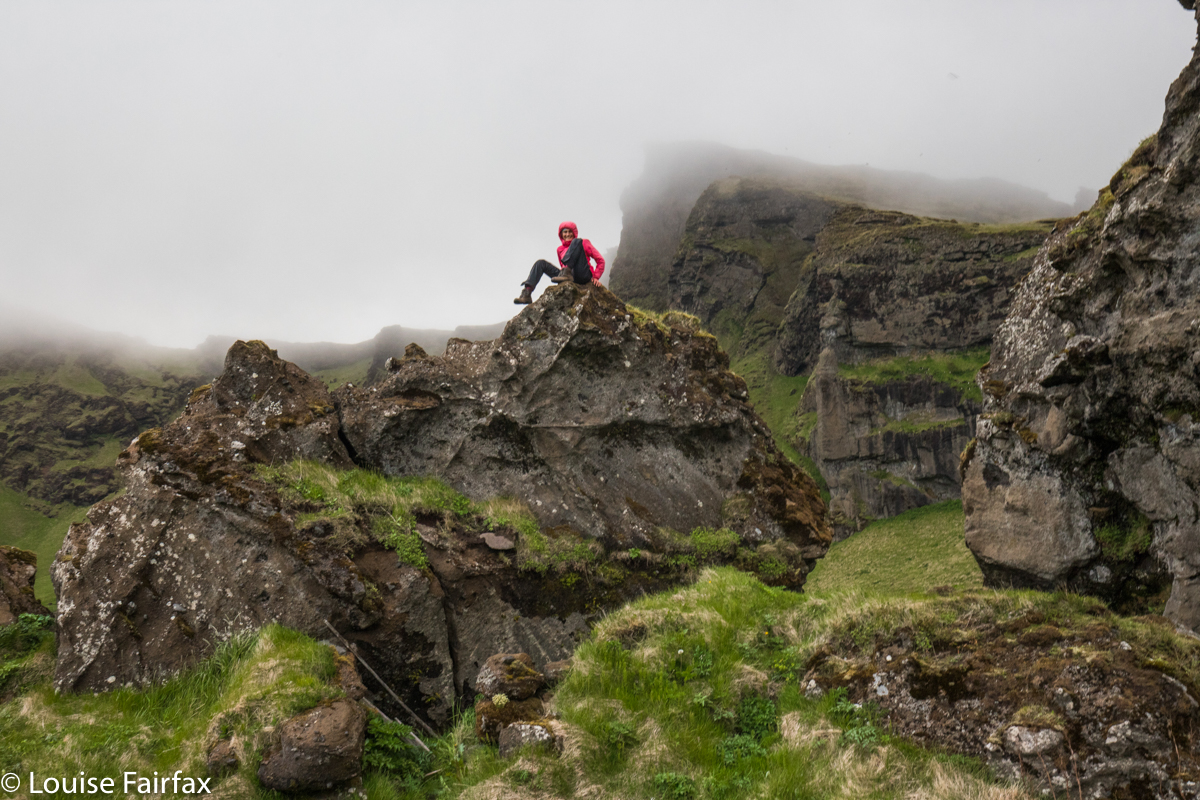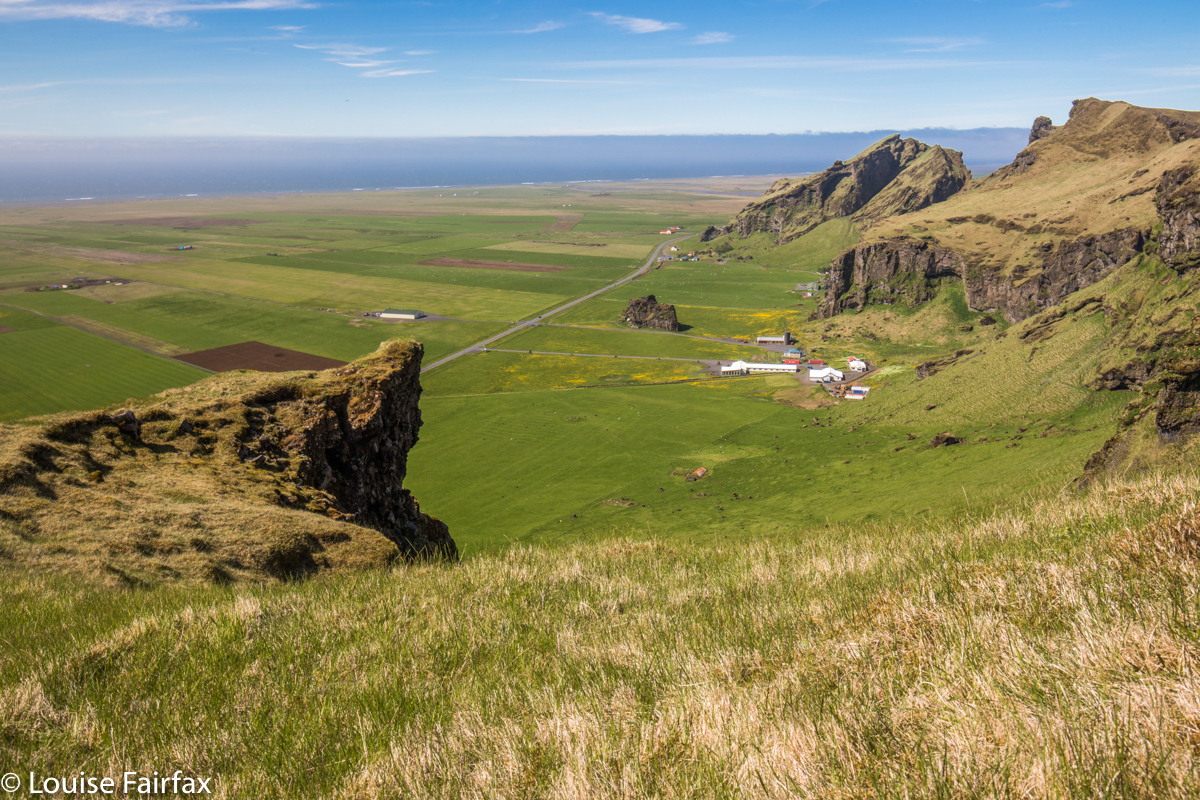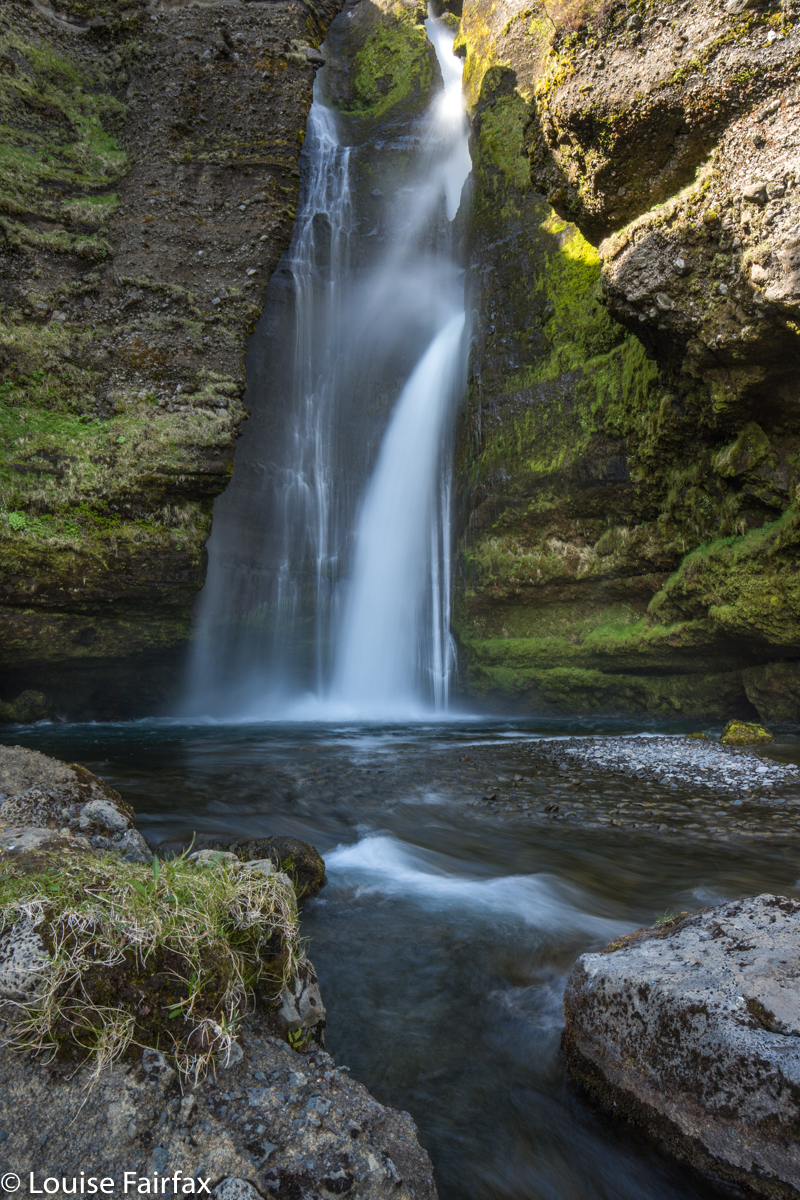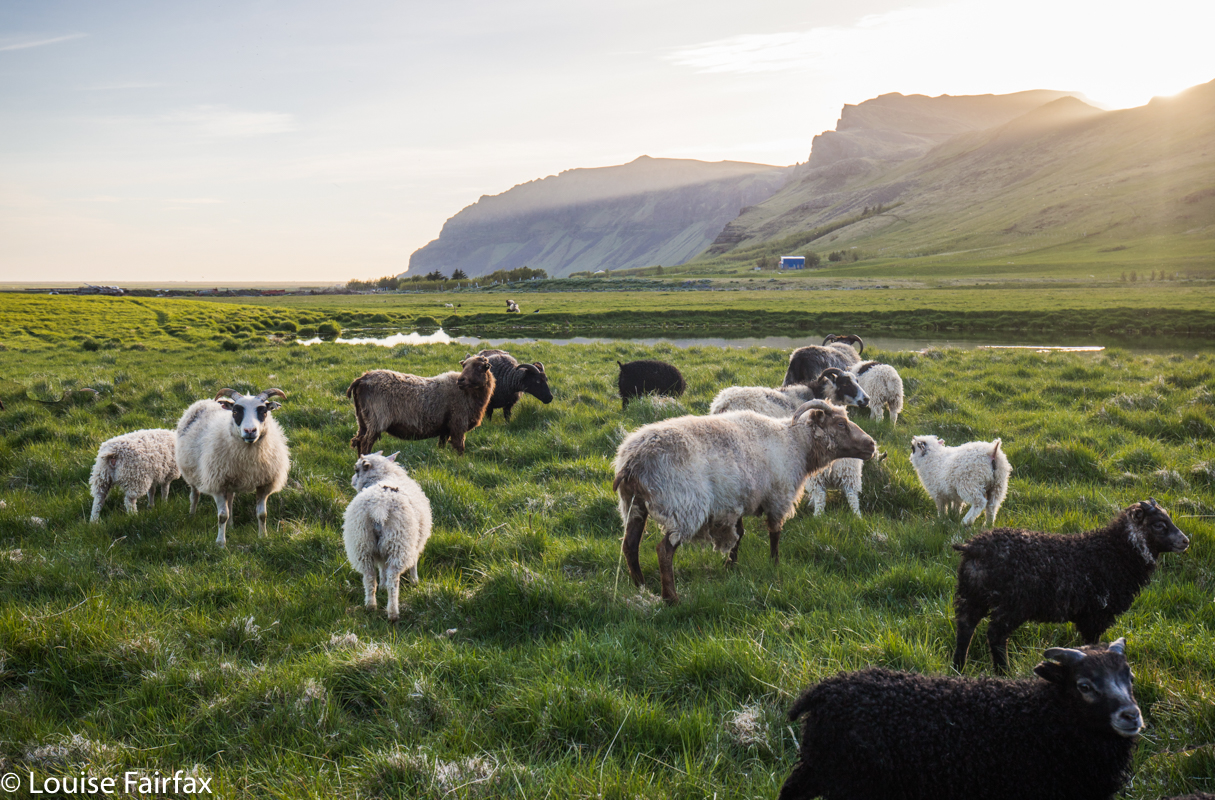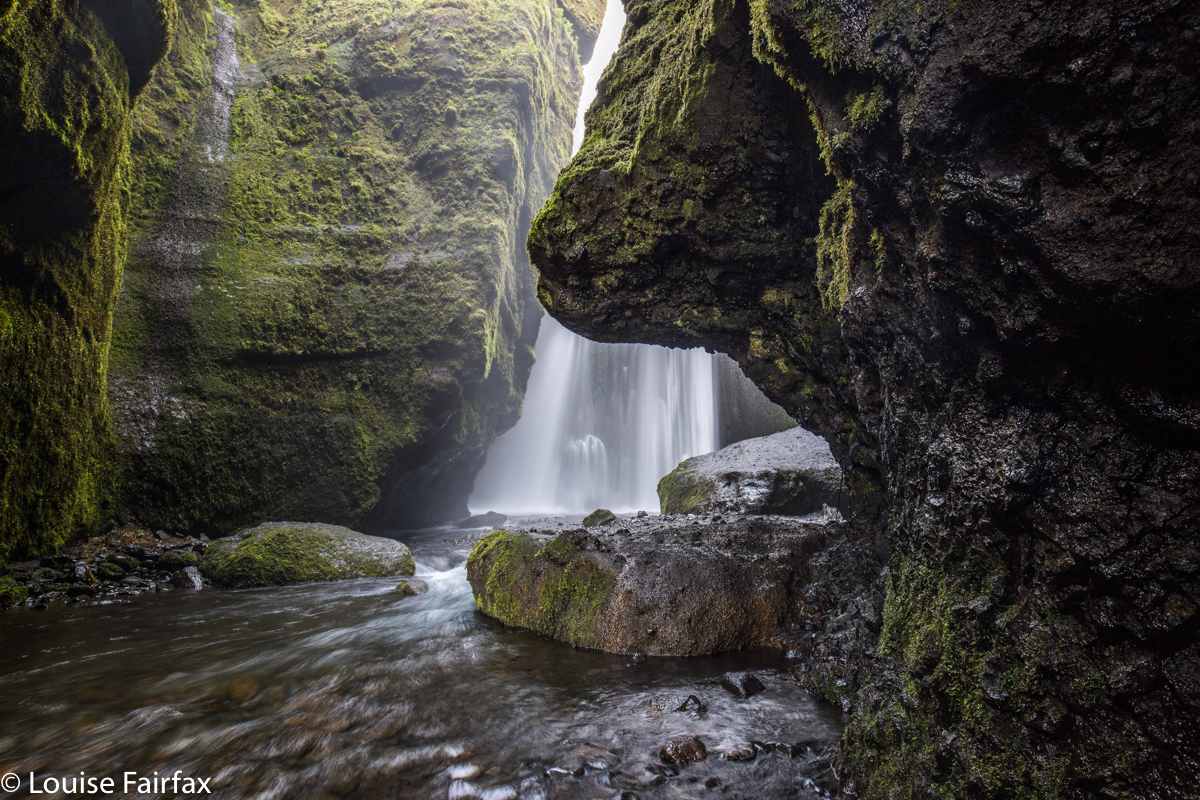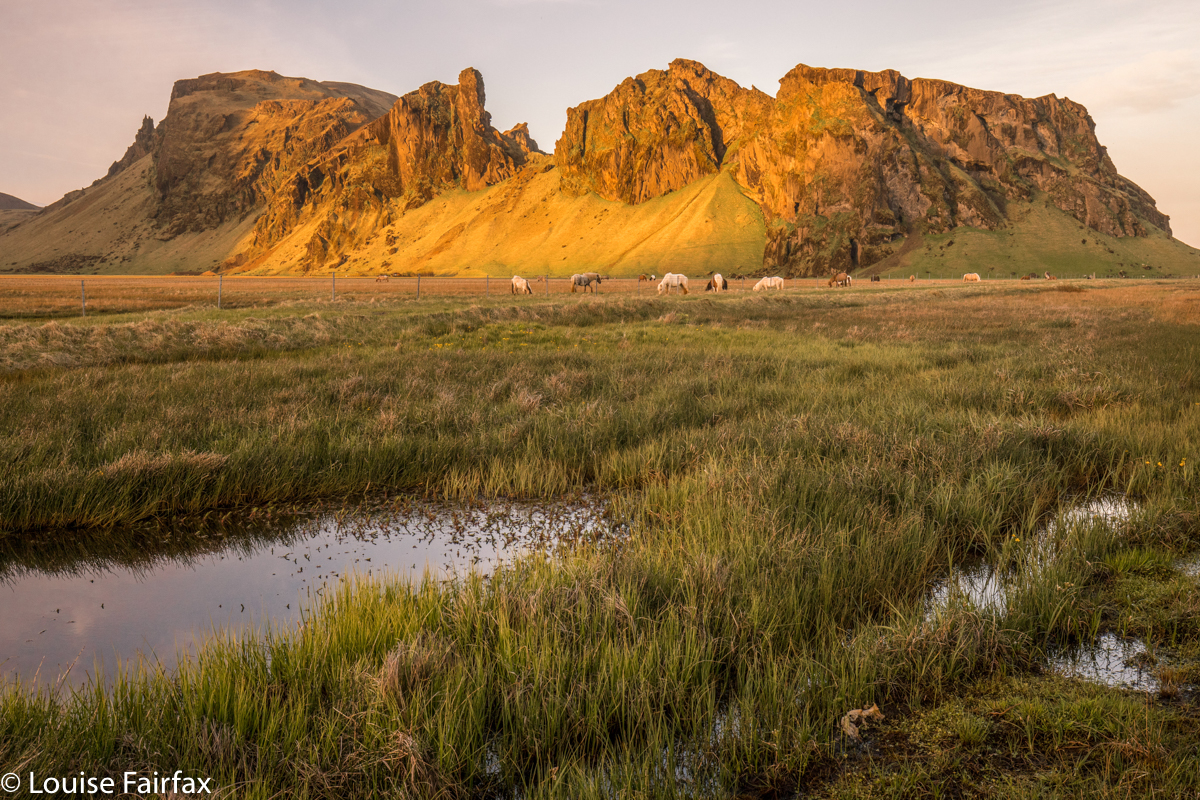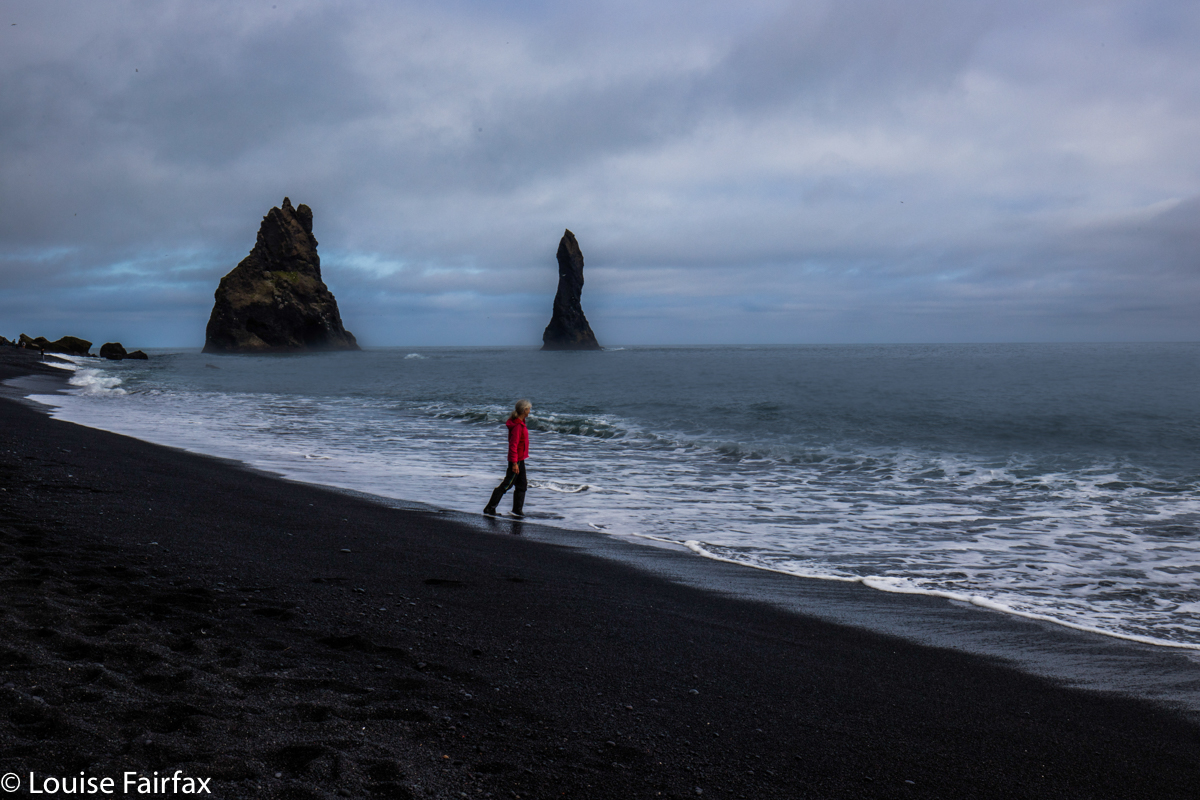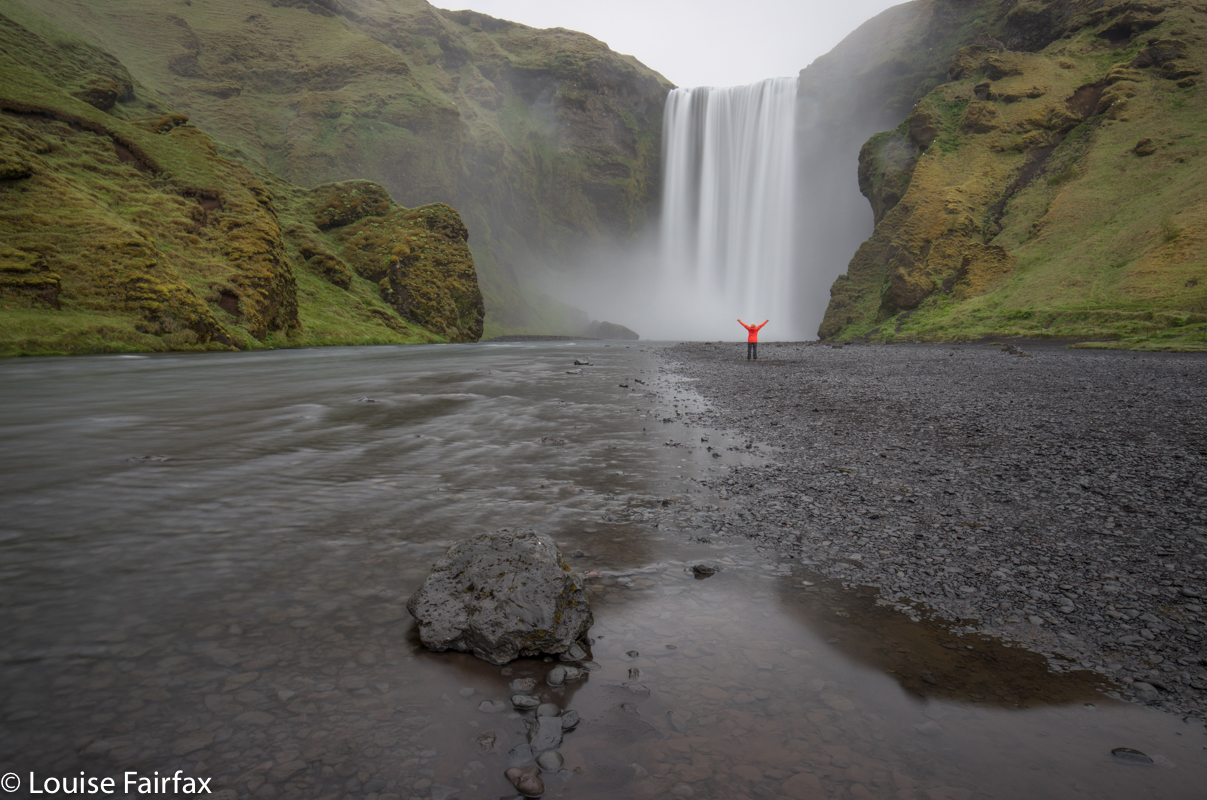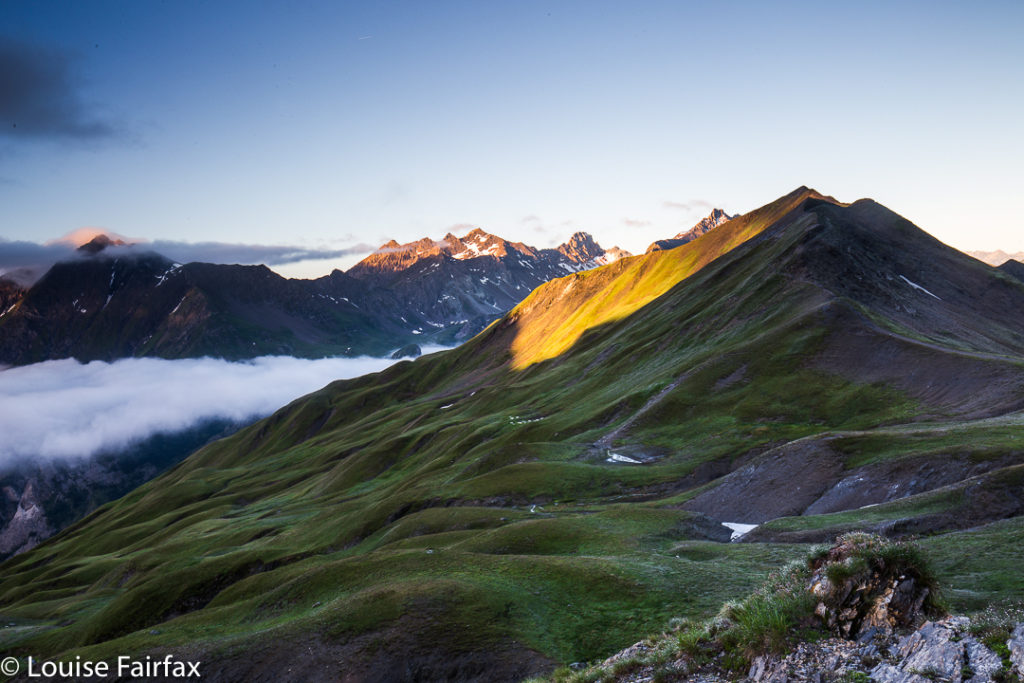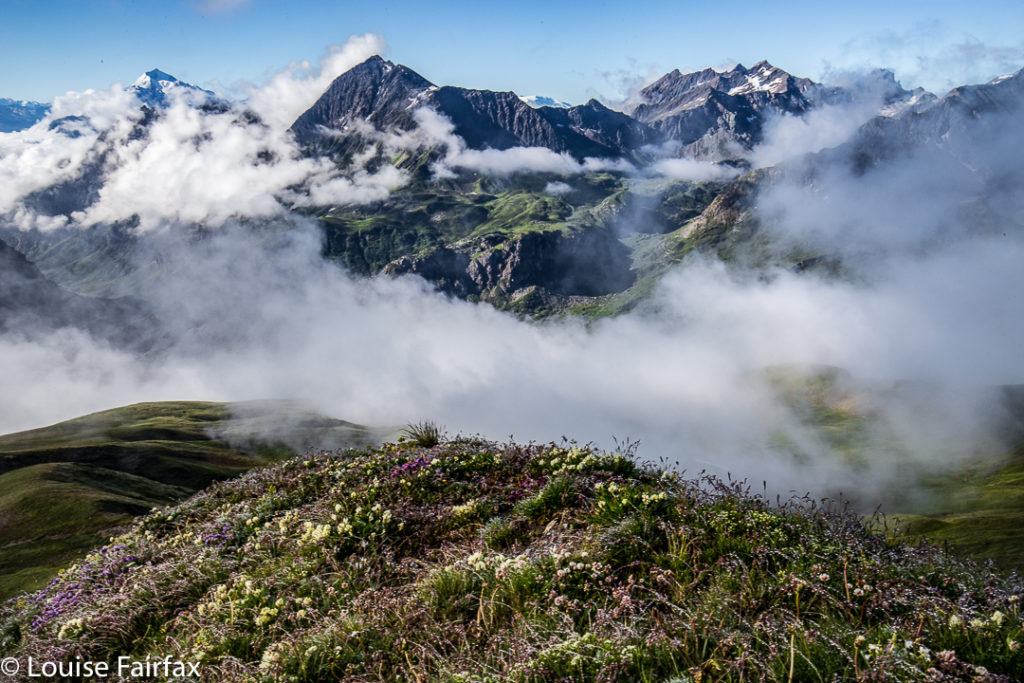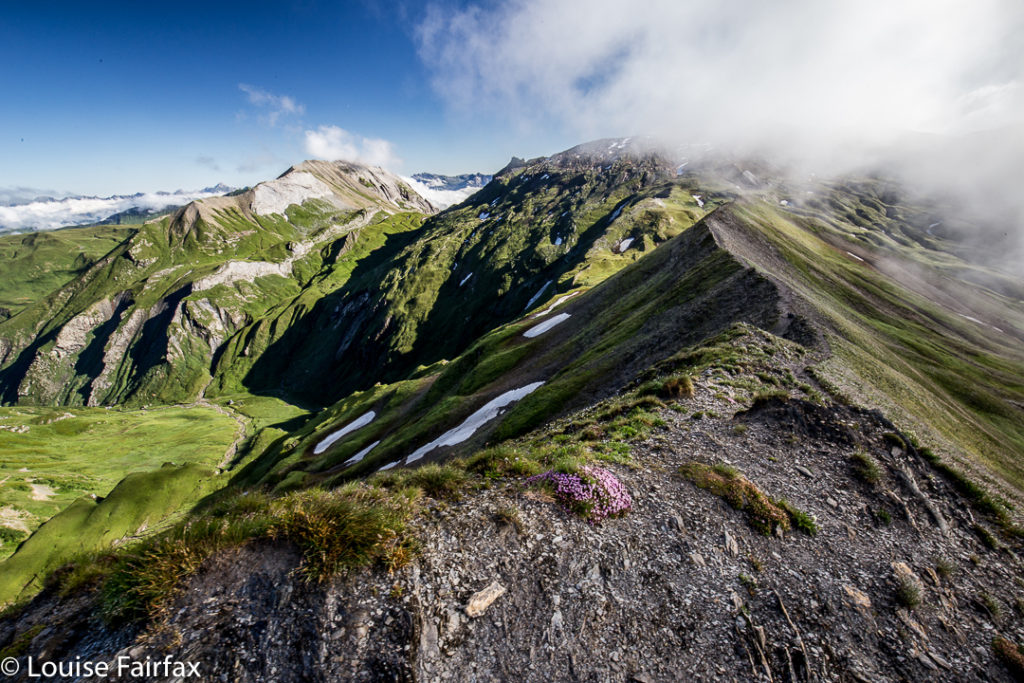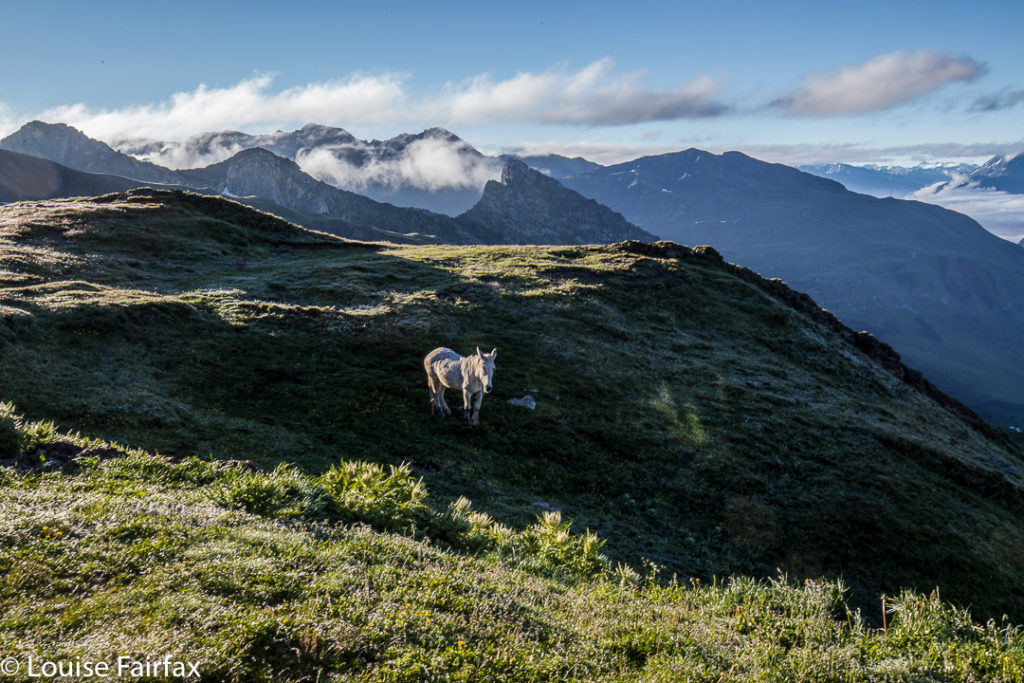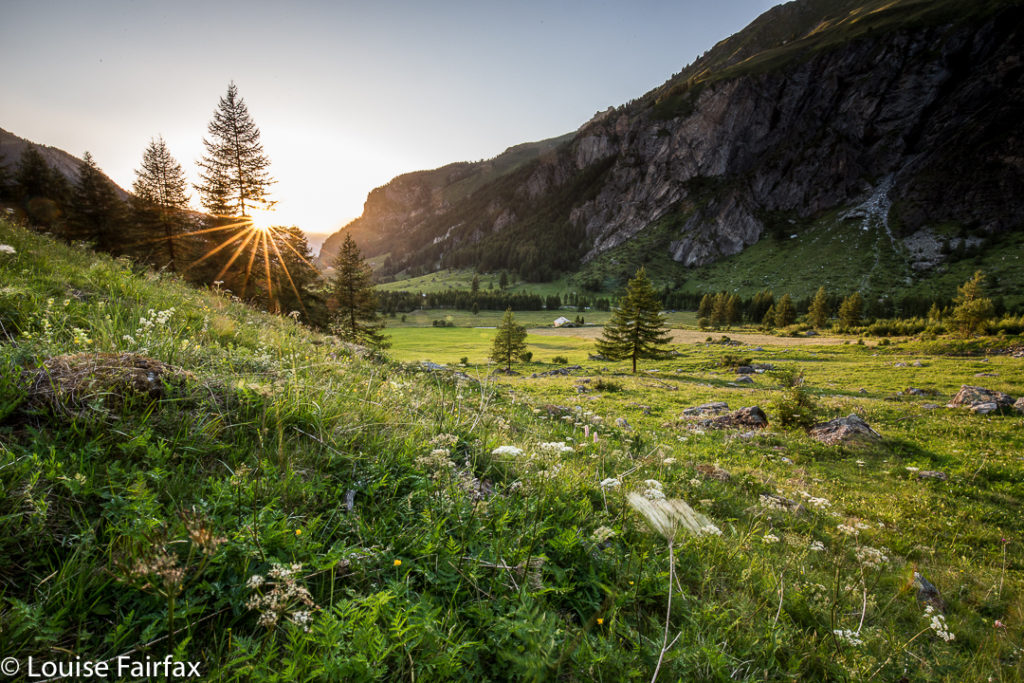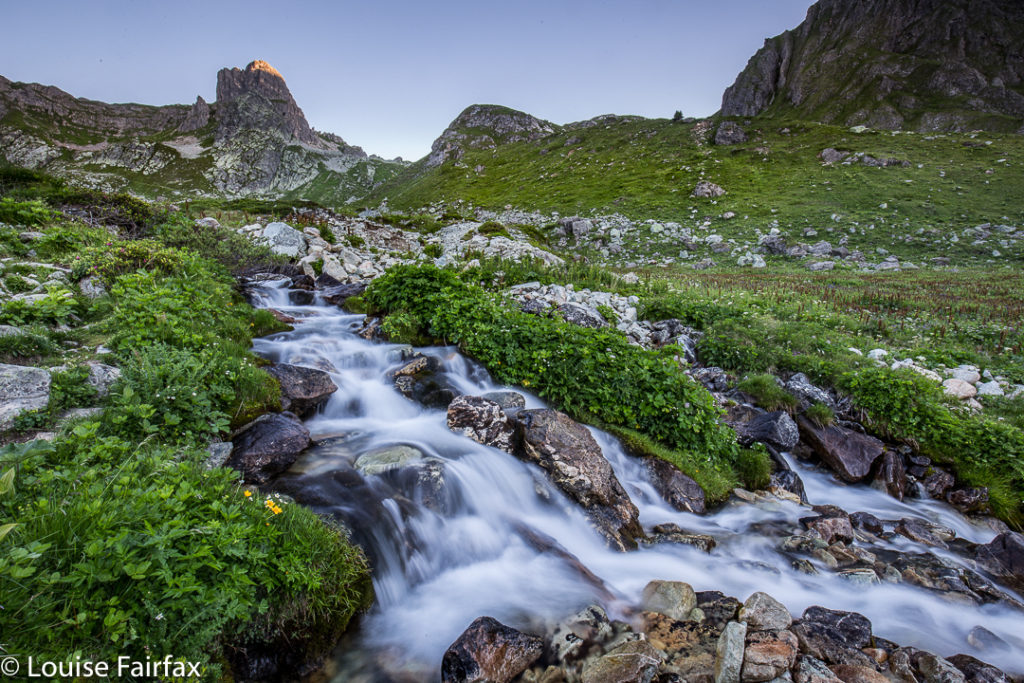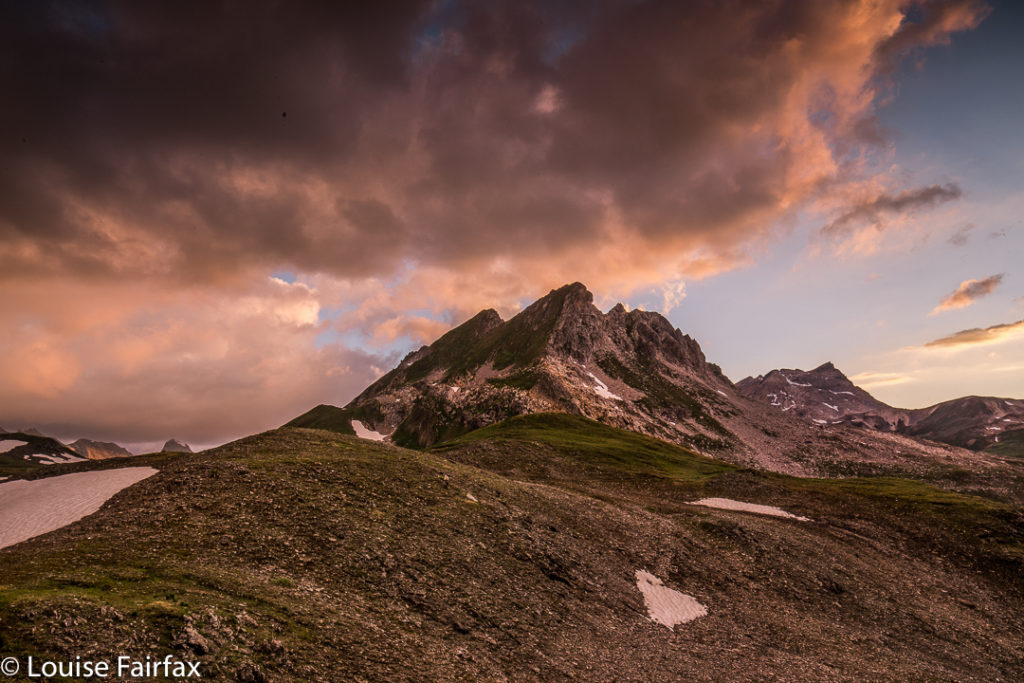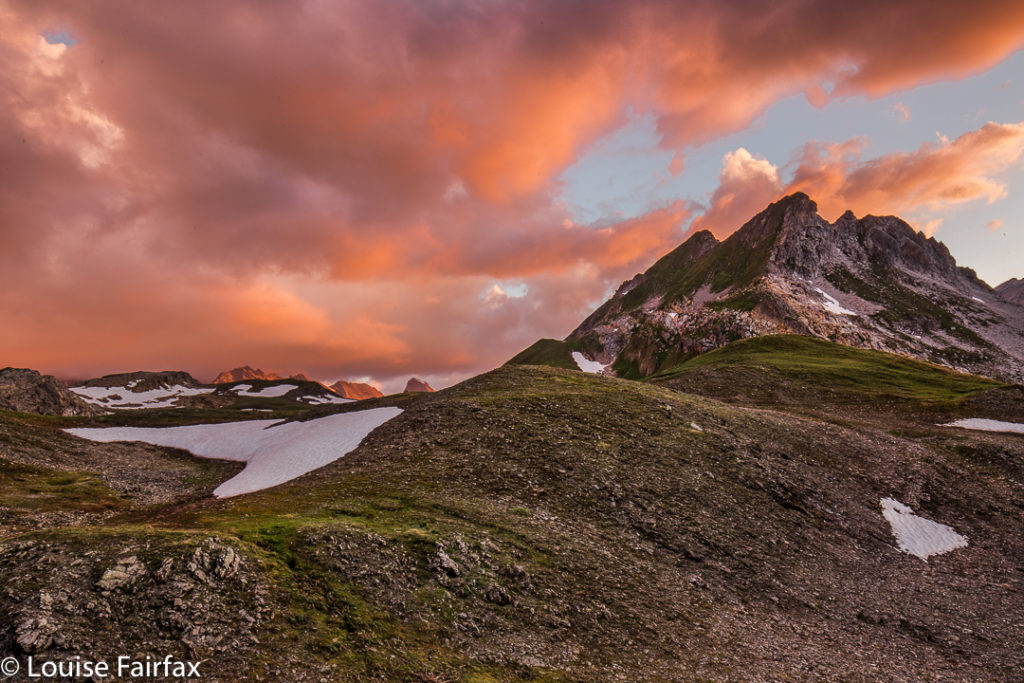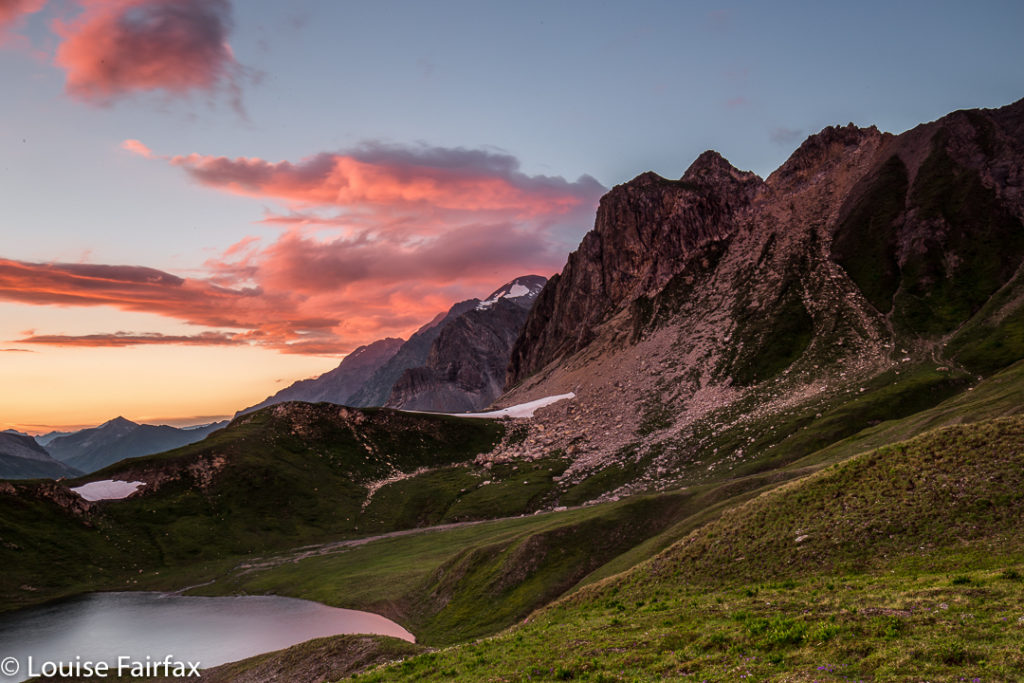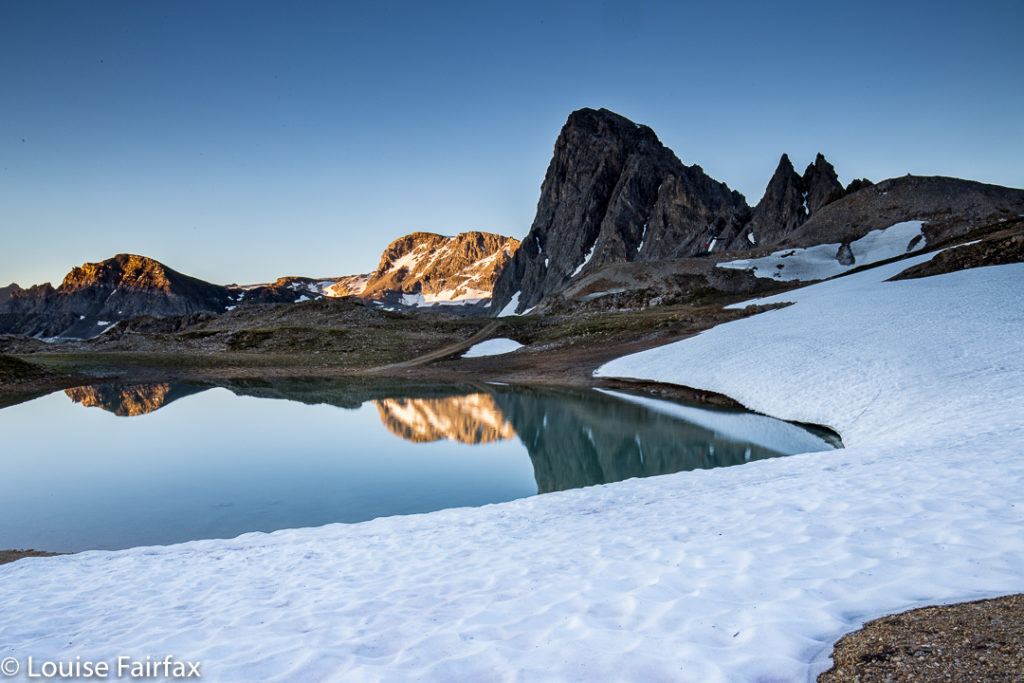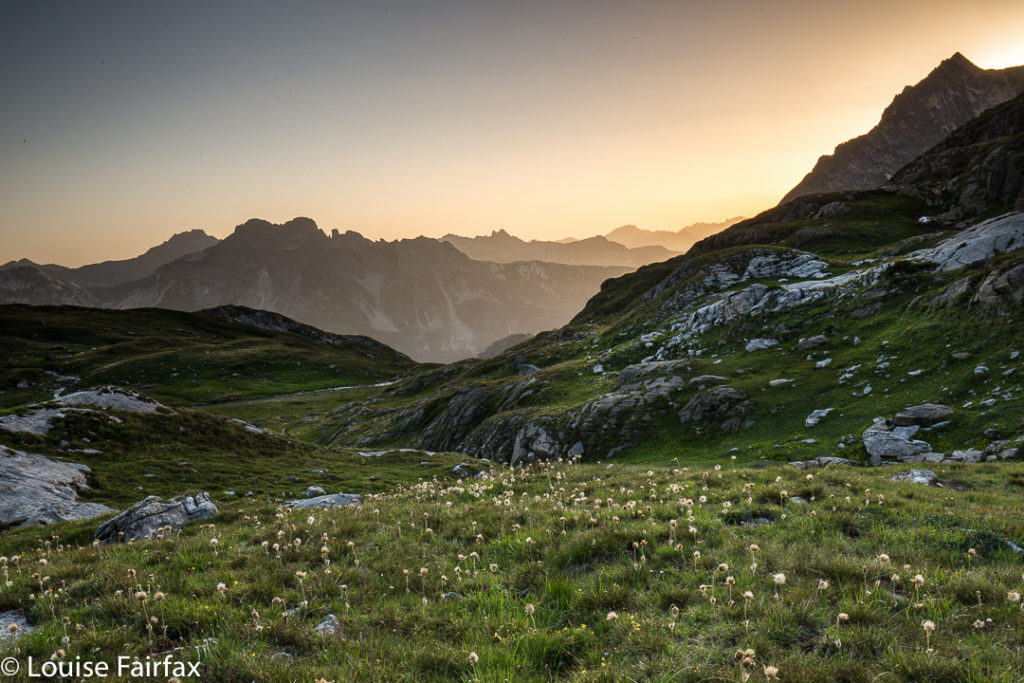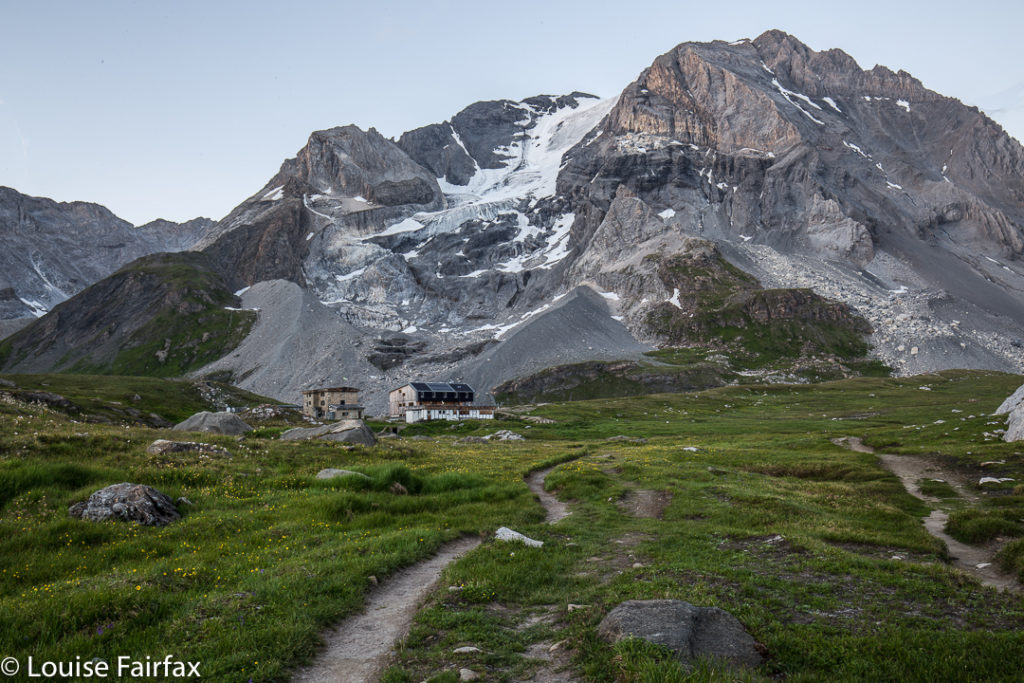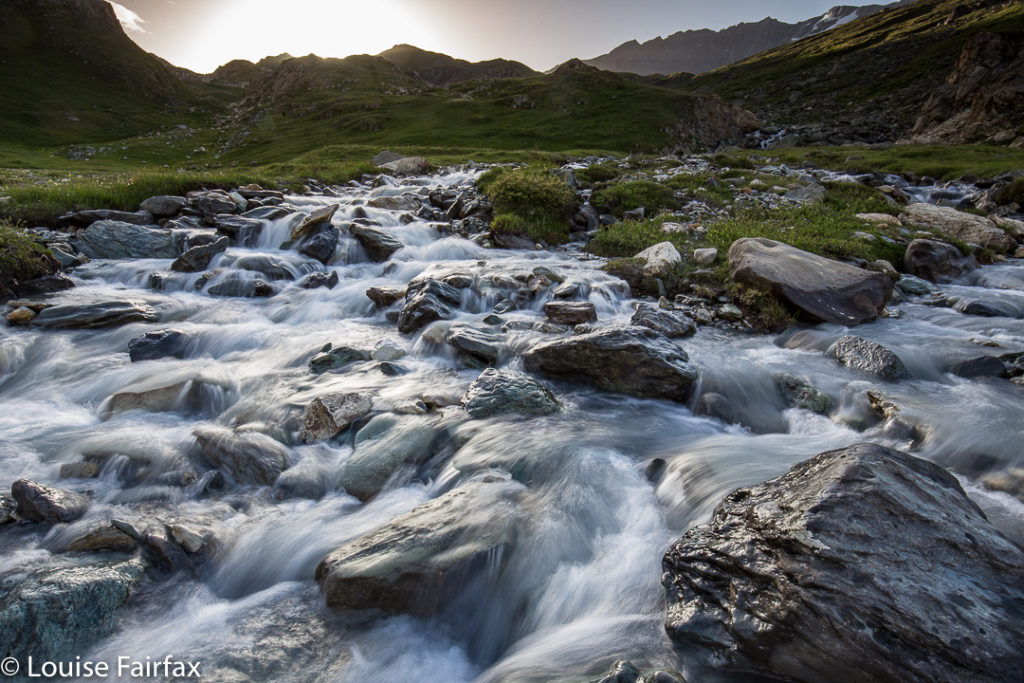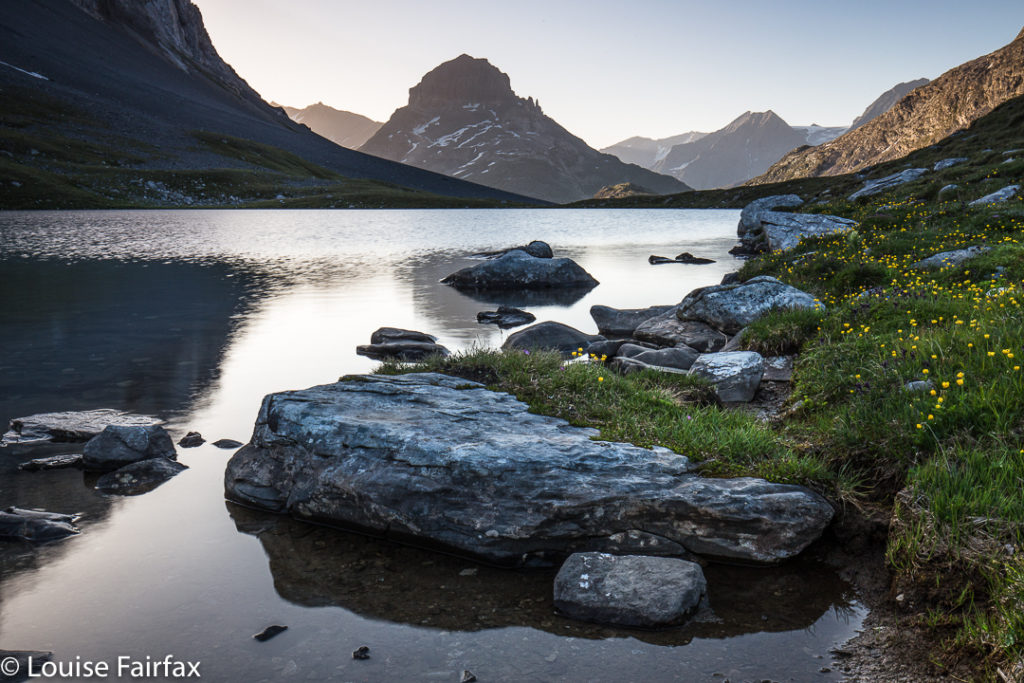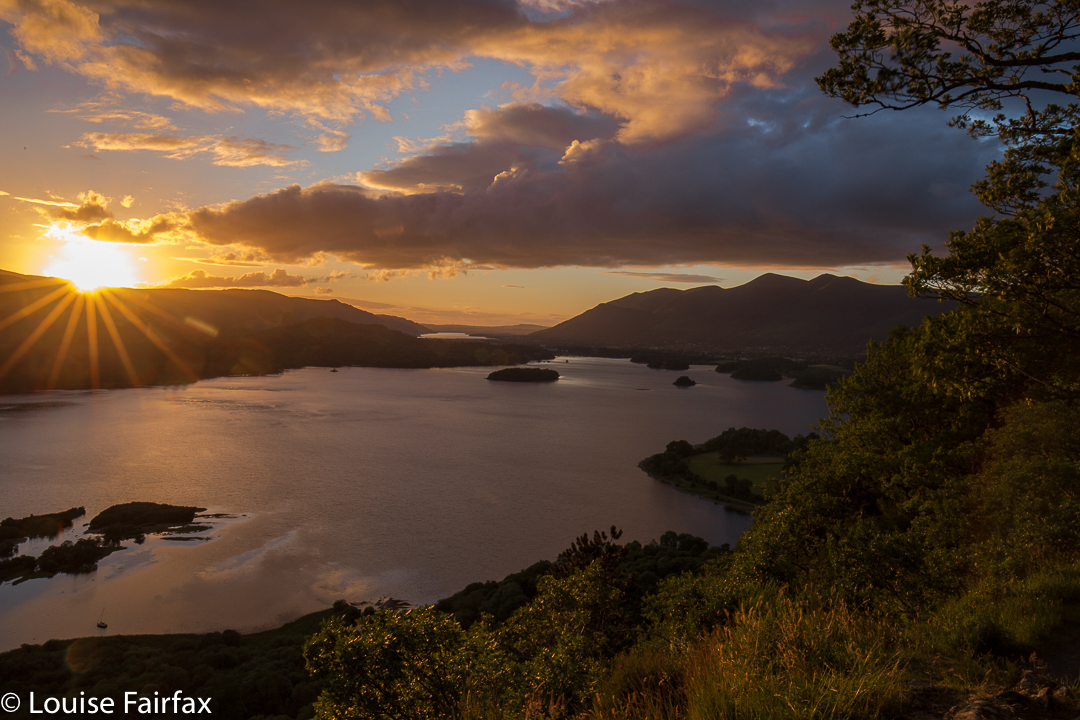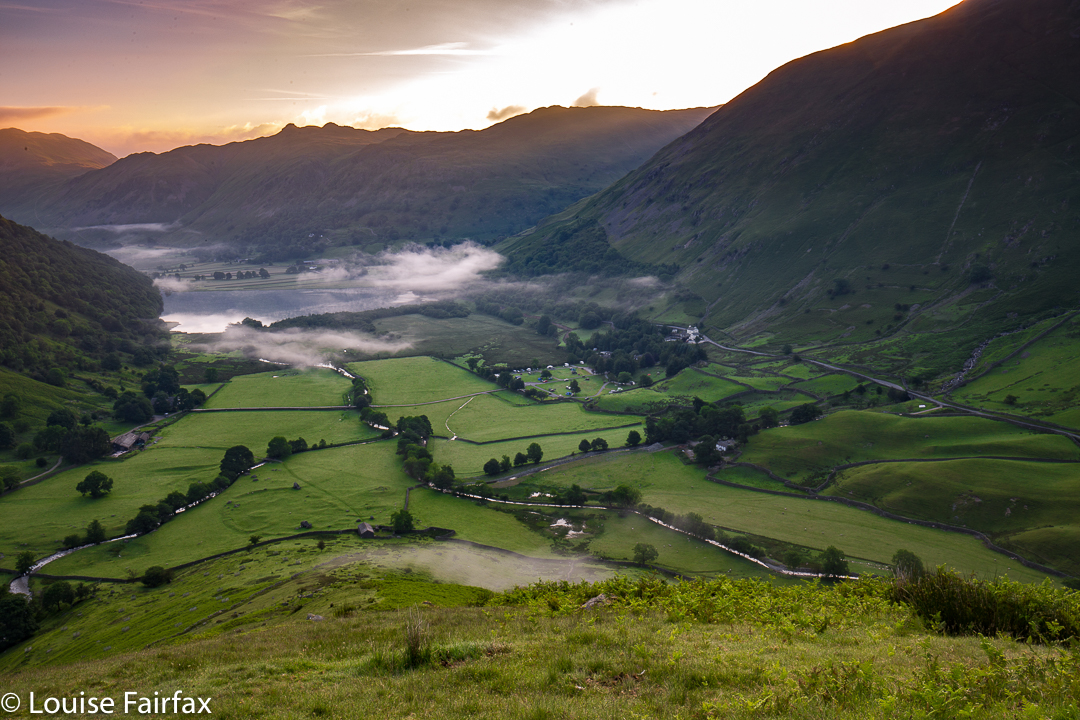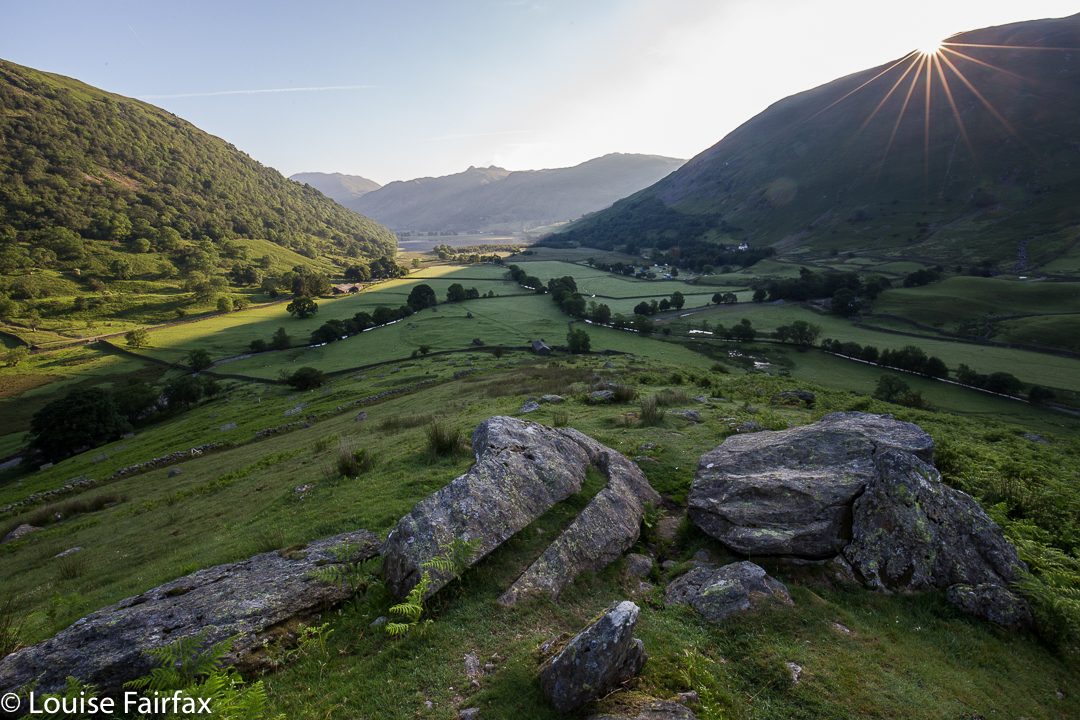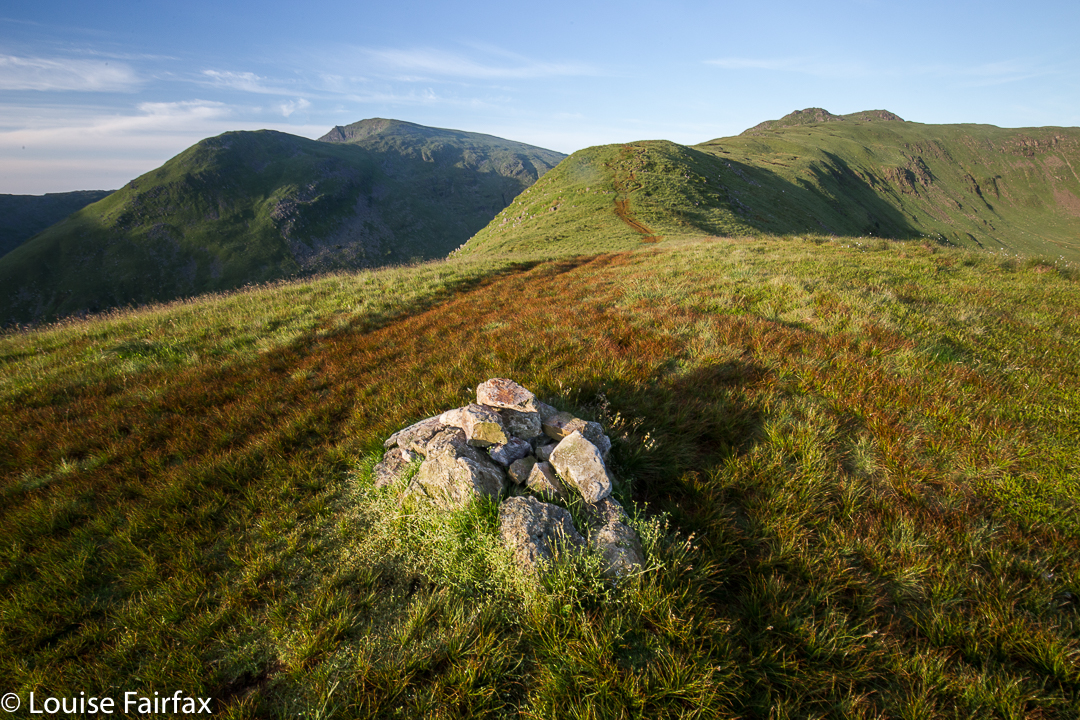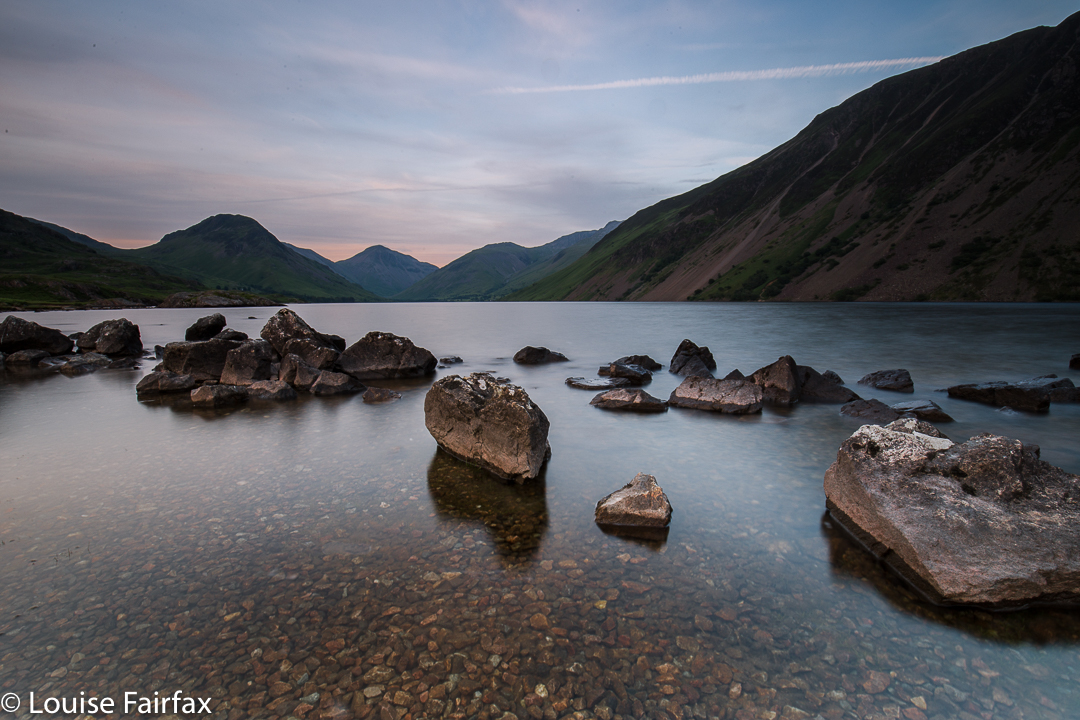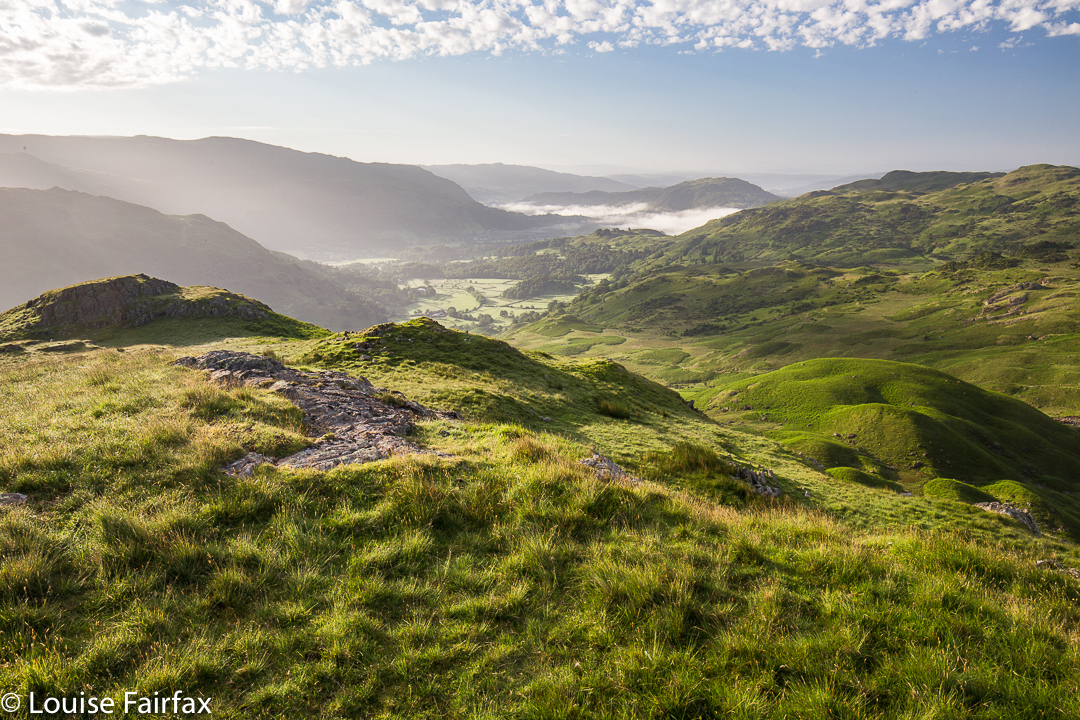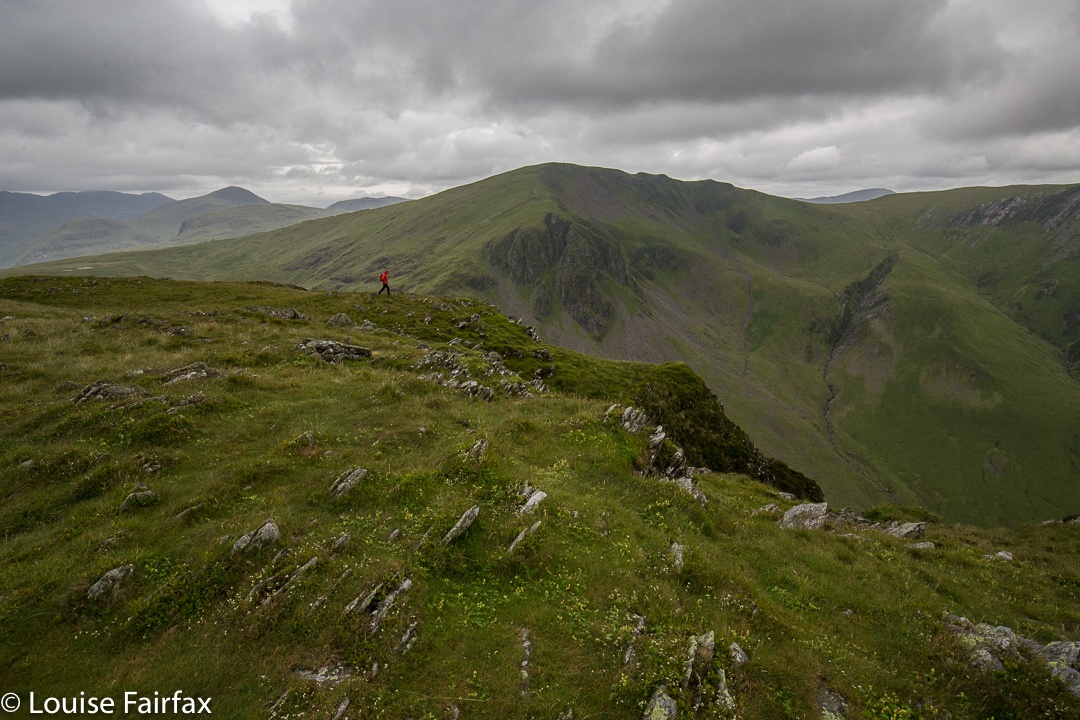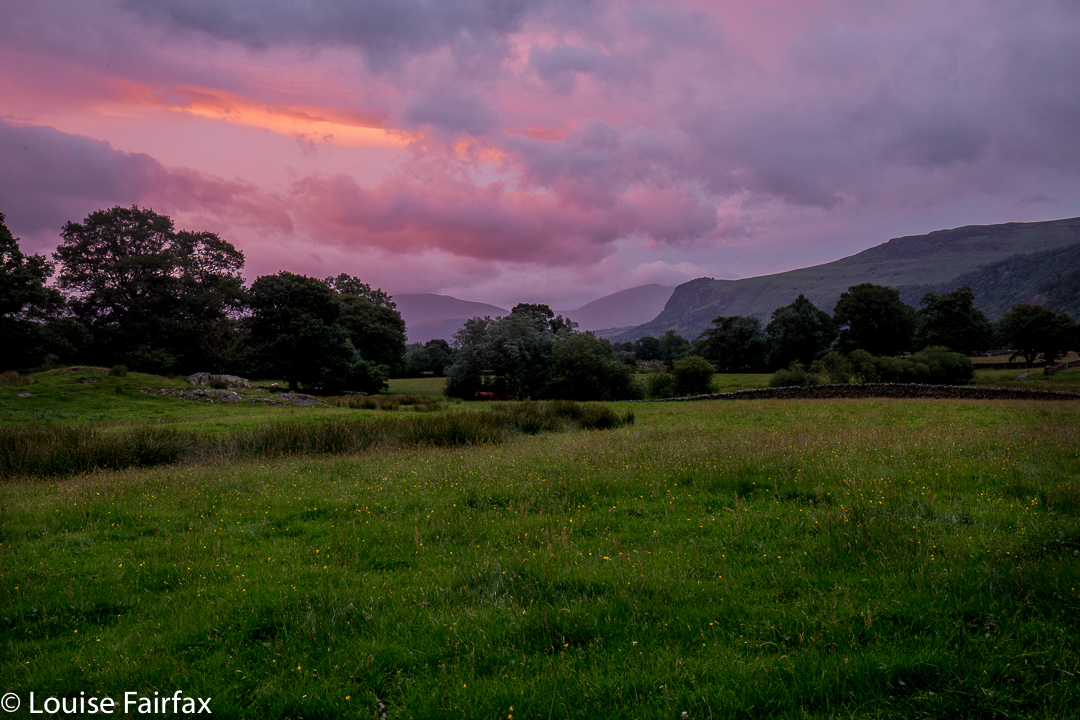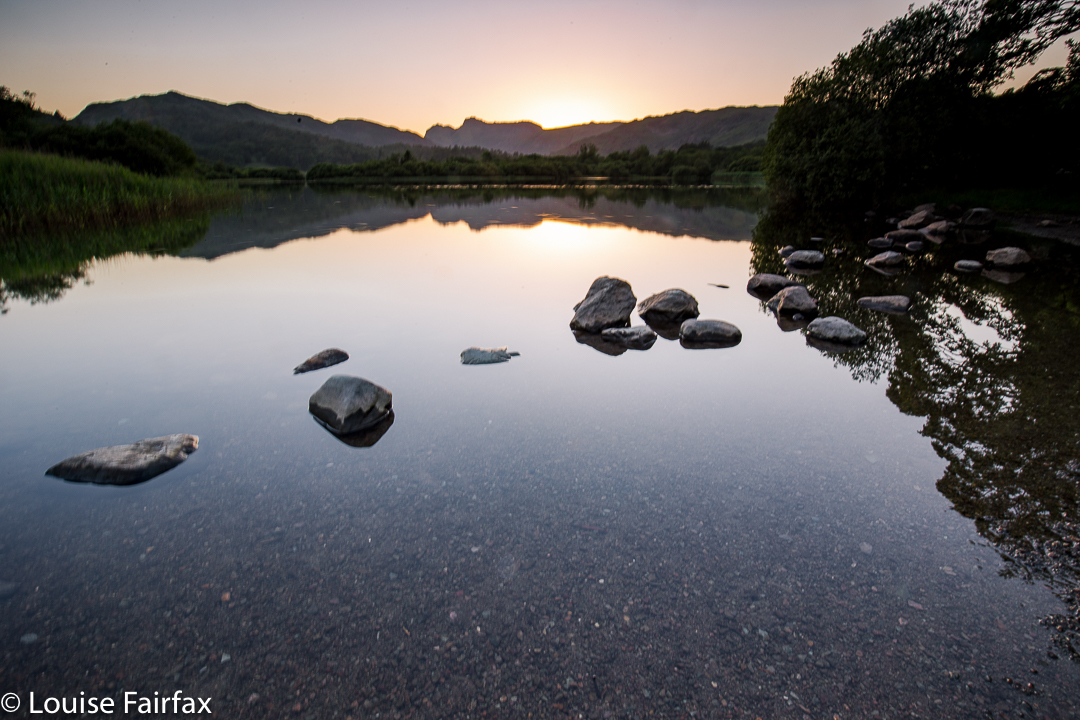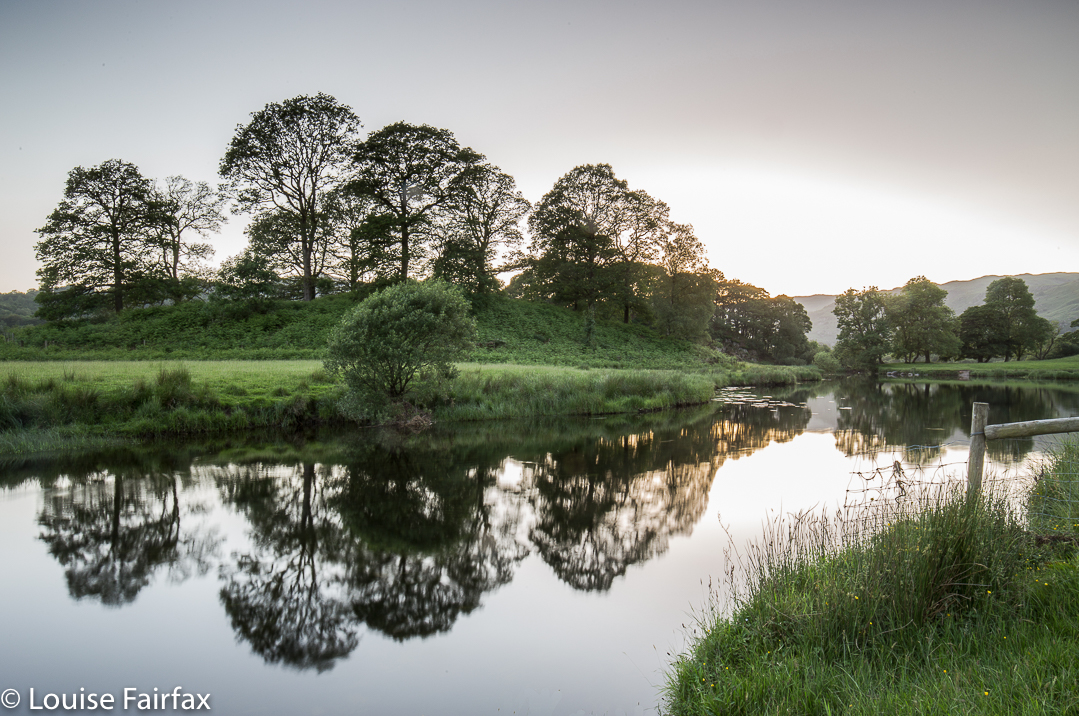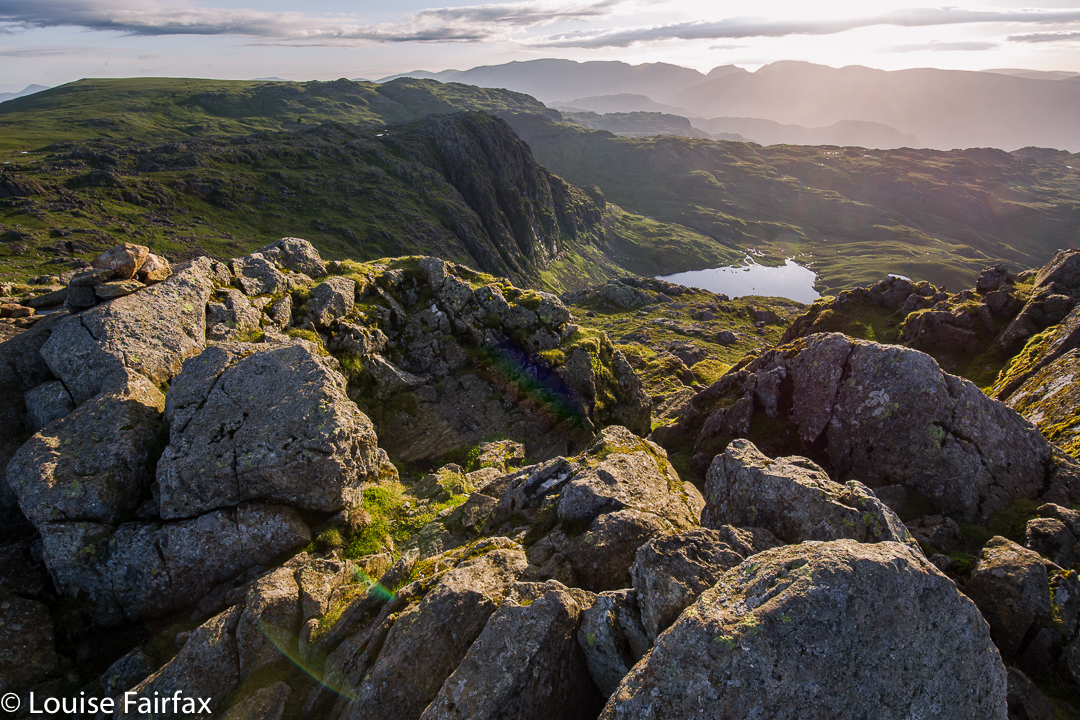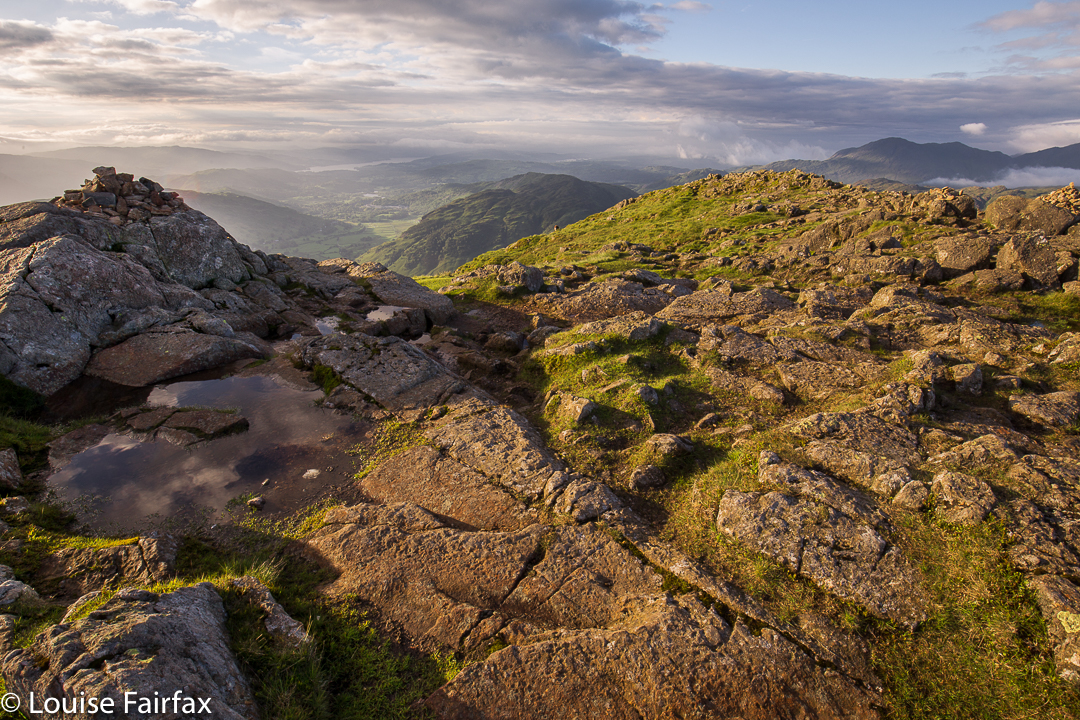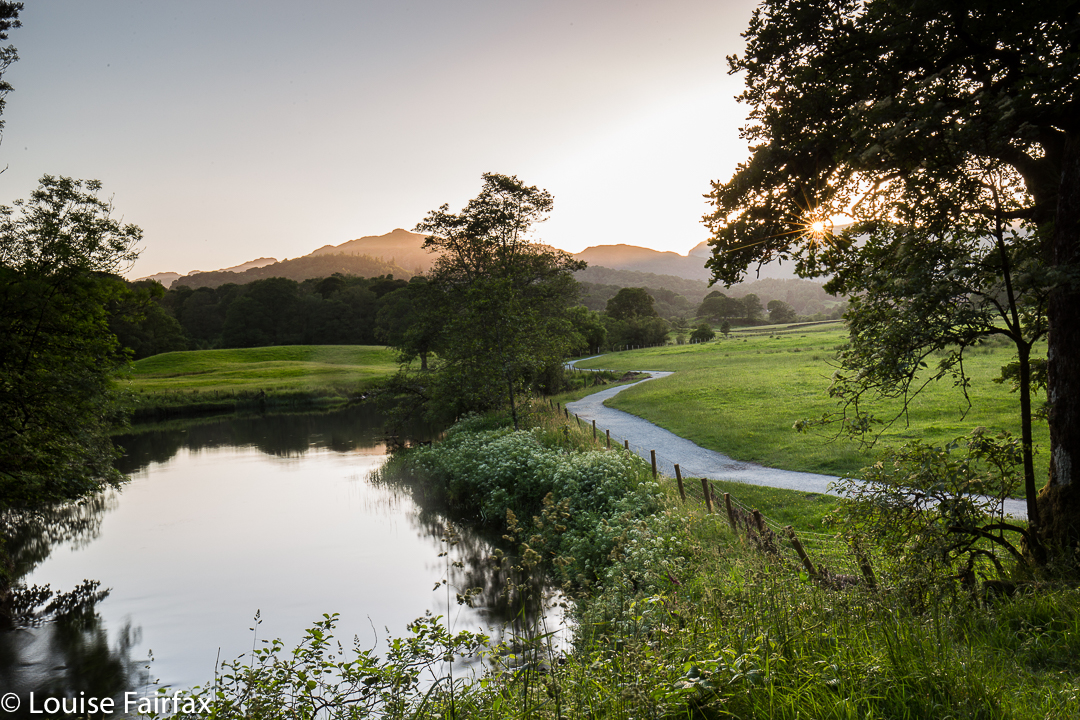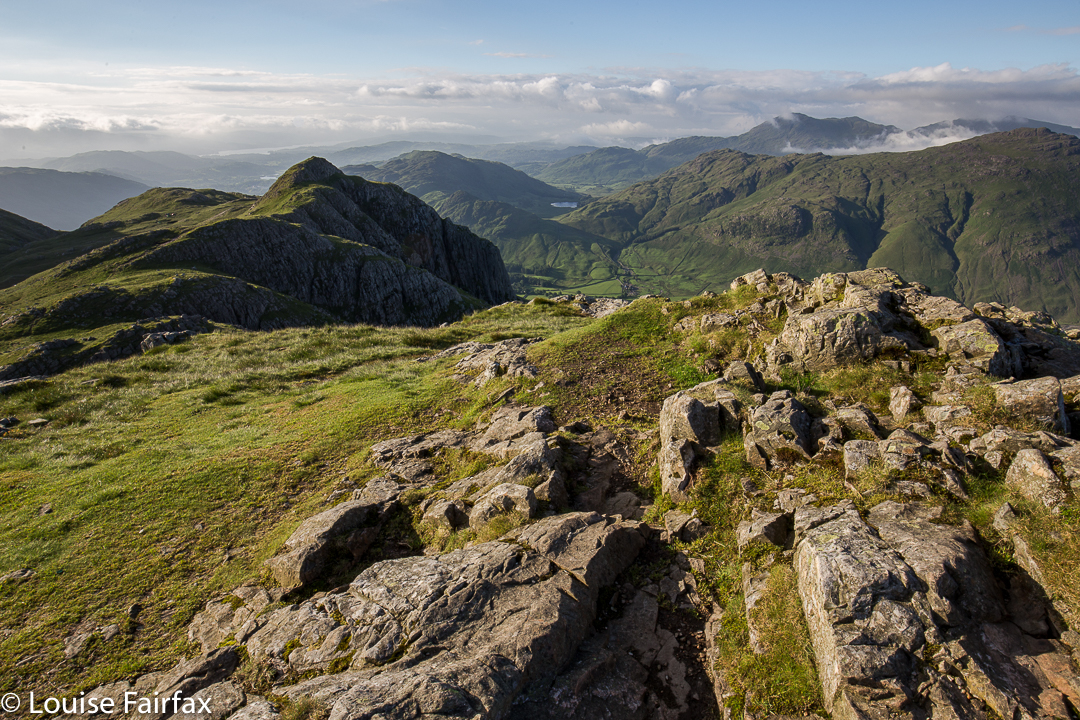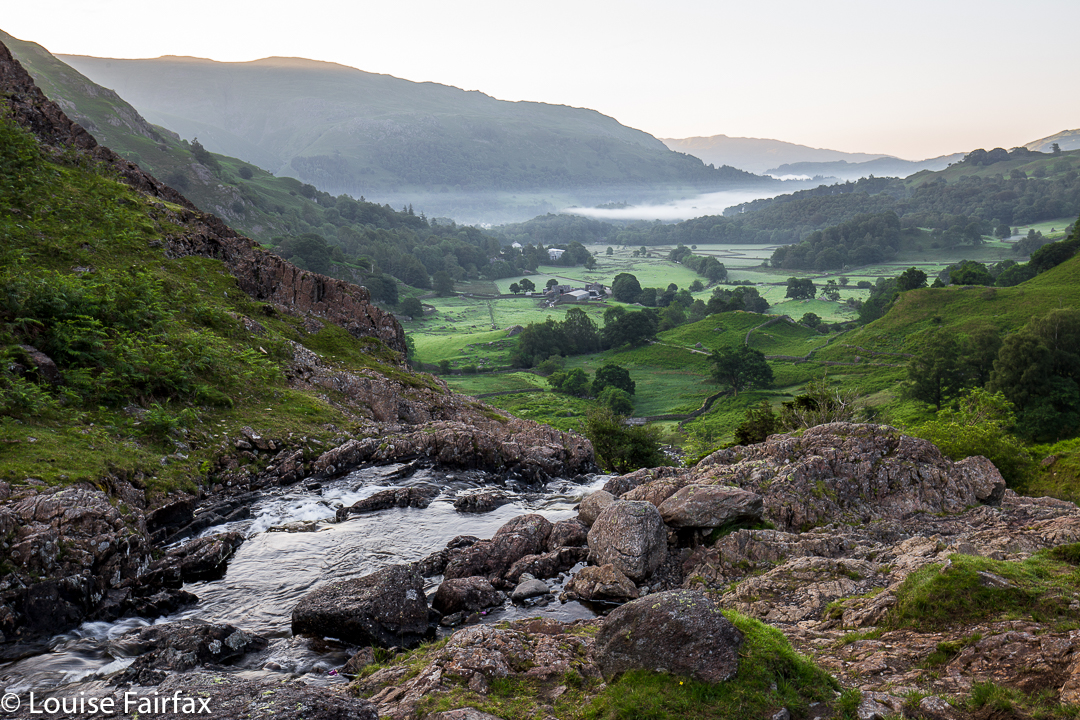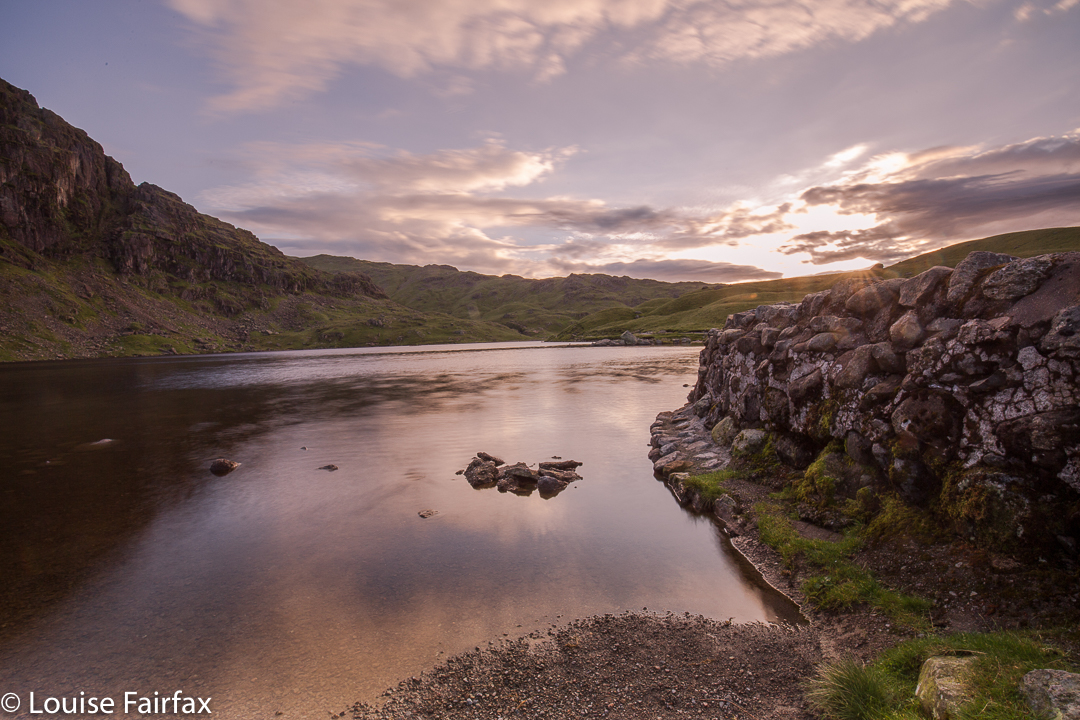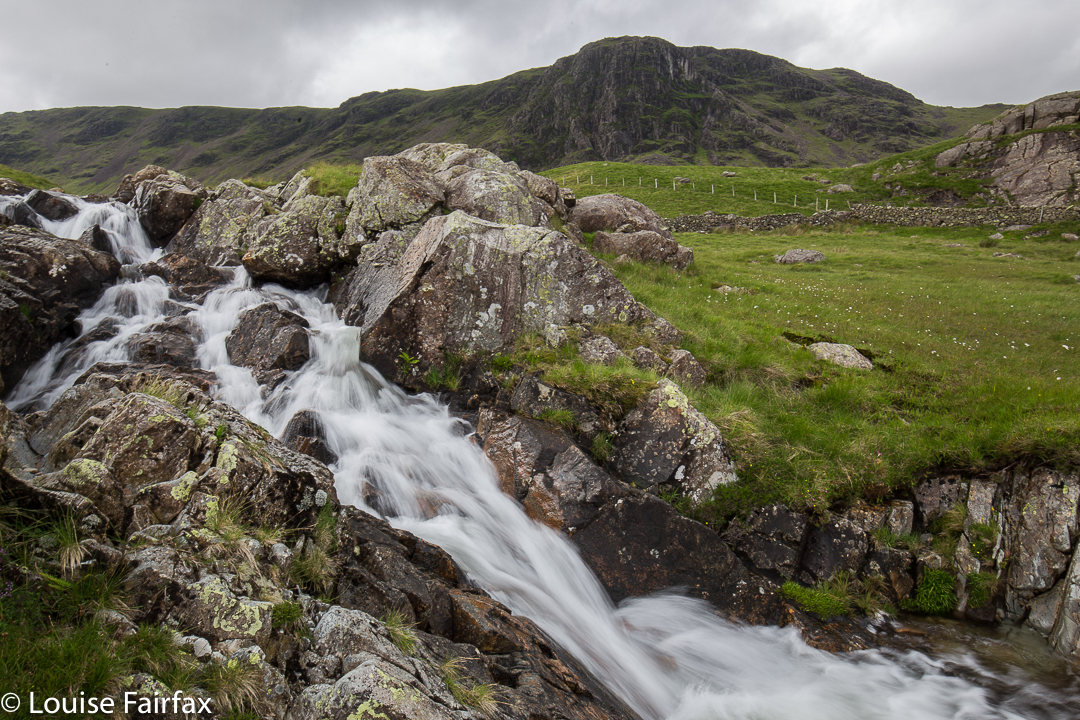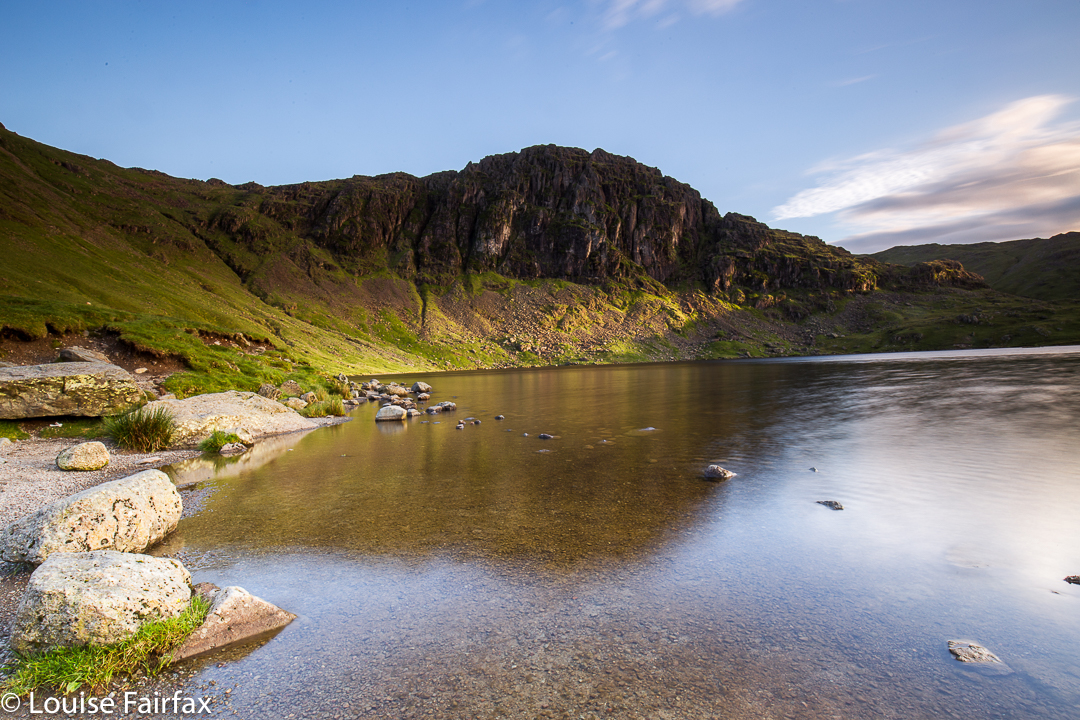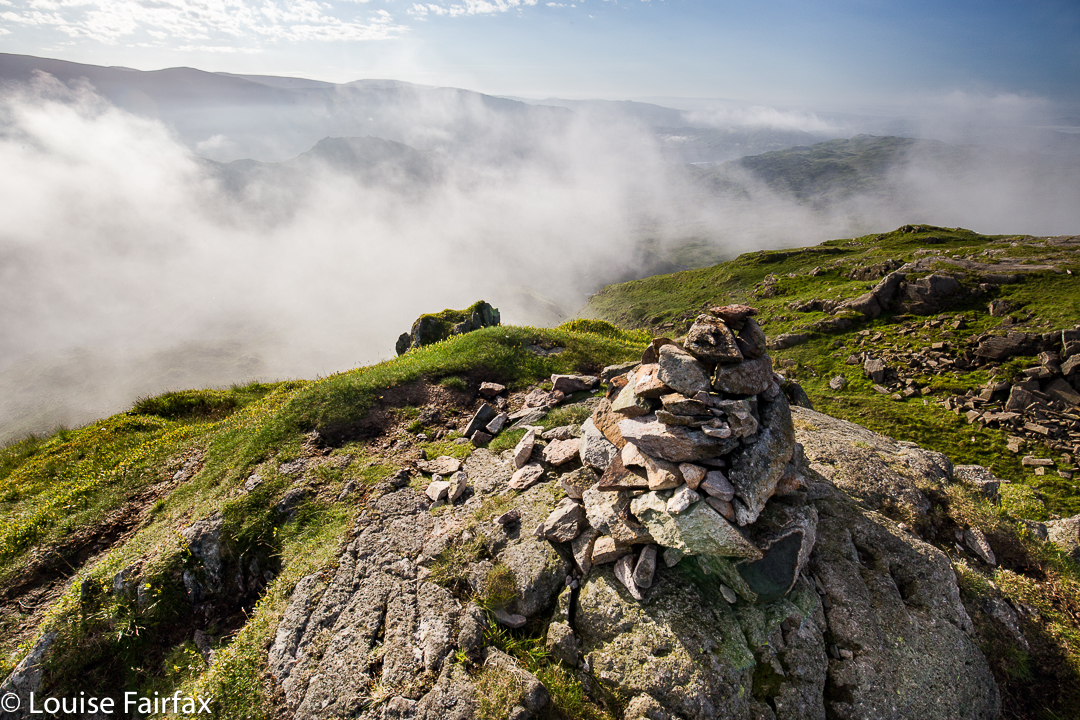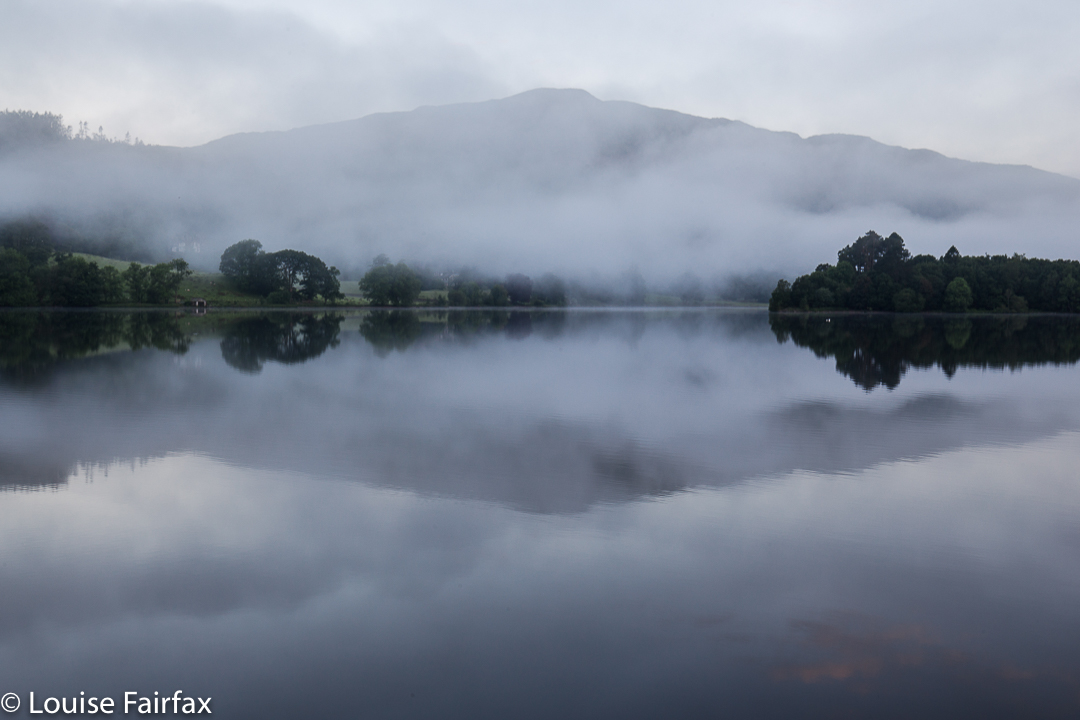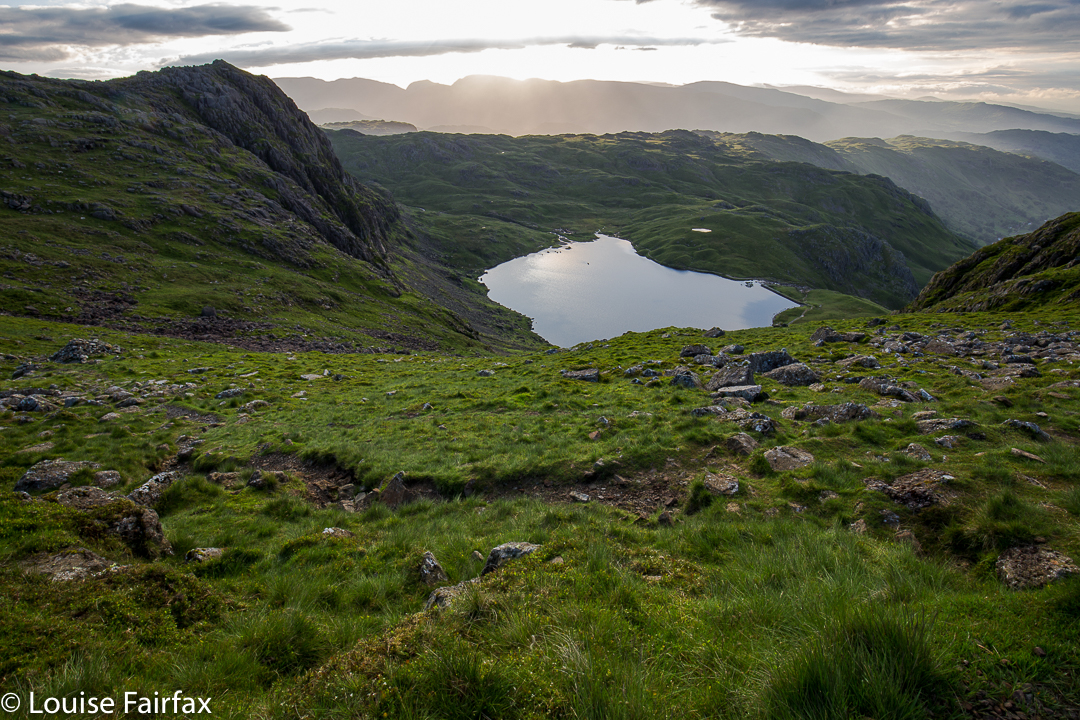Iceland 2018 The second three days
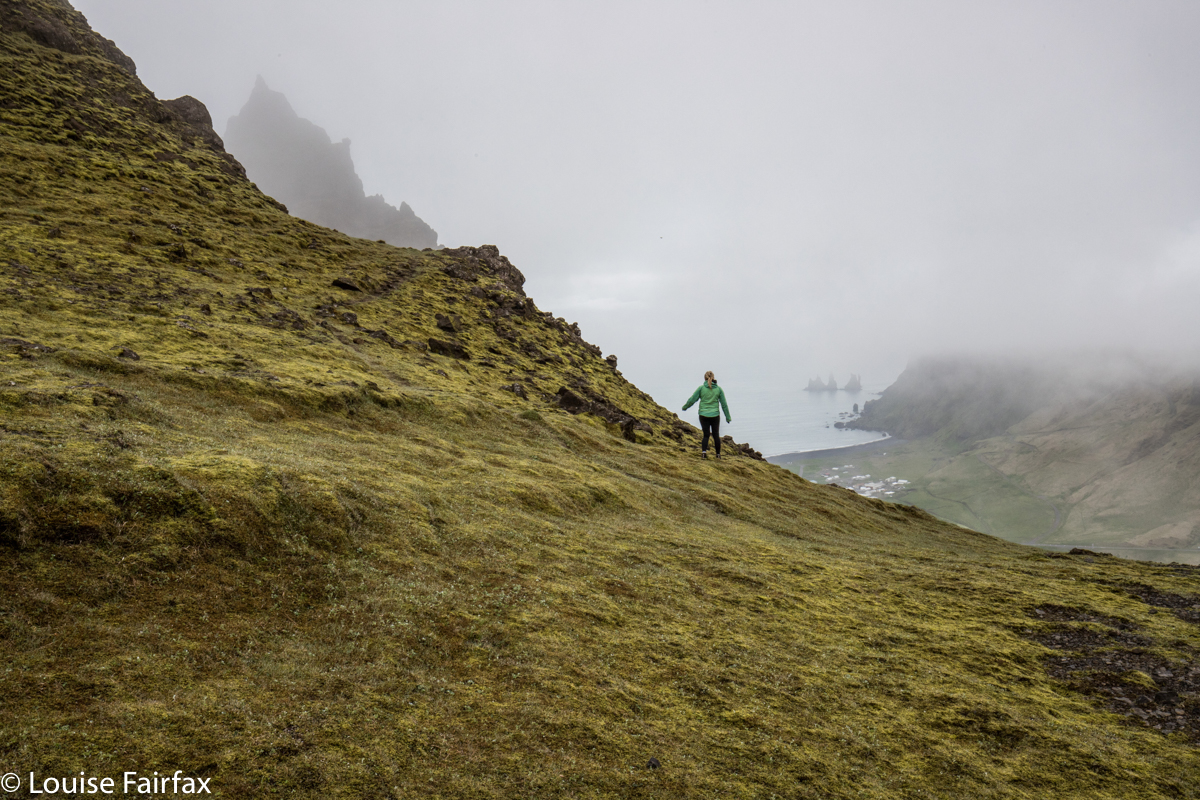
Day 5. Sadly, sadly we bid our farewells after breakfast, and headed for Vik. As neither of us likes sitting in a car all day, we decided that when in Vik, we’d climb the big cliffs off to the left as you approach. They looked so very alluring with their craggy precipices poking into the clouds. Just to check on available information, we went into the Tourist Office in Vik, and were advised to do some pathetic granny stroll around town. We thus, of course, ignored all the information we’d been given, and set out into the unknown, determined to reach the top of whatever it was up there, the name of which emerged to be “Hatta”. It had glorious cliffs to peer past into the abyss below, massive drops that were not to be accidentally gone over, misty towers of rock hiding in the gloom, and, every now and then, a view, like in the photo above. See those cute little rock stacks in the ocean? They are the massive giants called Reynisdrangar. All big things are tiny relative to something mightier than they are. If only humans could recognise this – especially ones in politics.
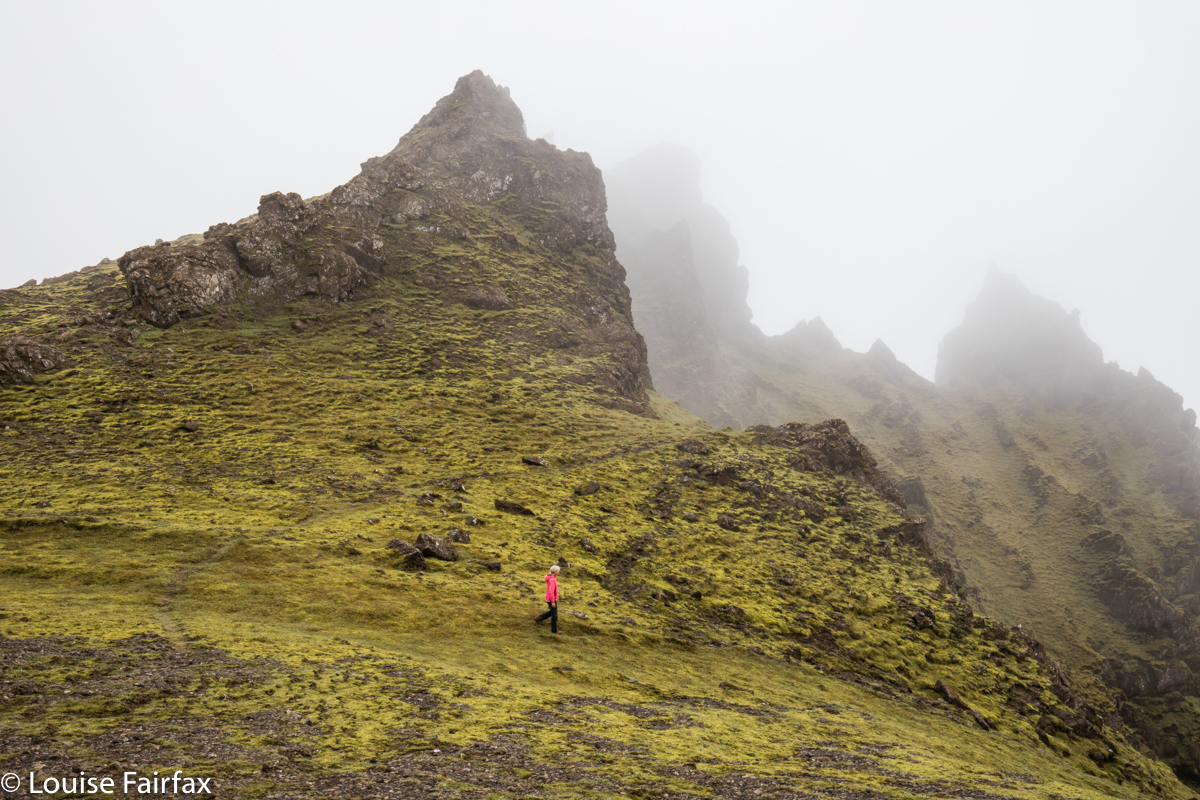
Visibility was not exactly good, but I had seen from a map that if we stuck to the ridgeline (carefully avoiding its knife edge), we would eventually arrive at the summit. Hopefully we could recognise it in the white out. If tourist offices sold decent topo maps instead of dispensing the advice to stay at home and wrap oneself in cotton wool, that would actually keep people much safer.
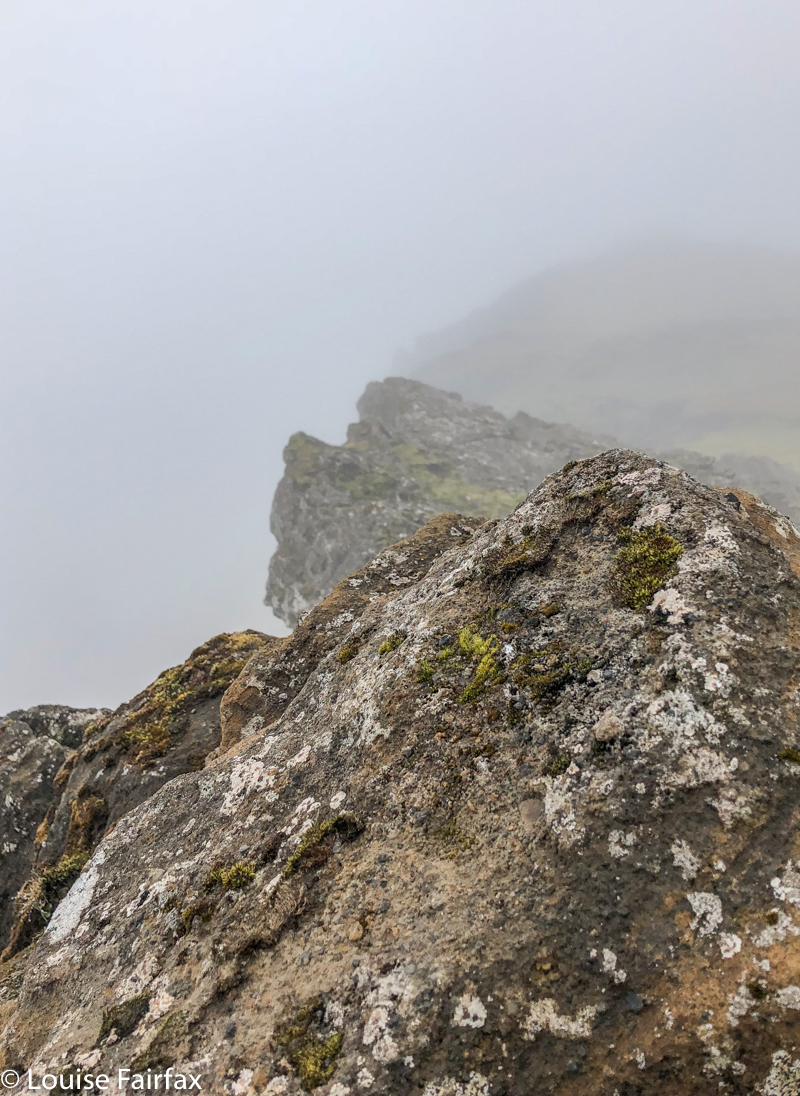
And here is our wonderful summit view. Actually, I’d much prefer this to a vast but murky vista. This one has the appeal of the obscured embedded within.
So, that killed the time until lunchtime.
After soup in Vik, we headed off further east, with Timea’s list for the day close to hand. Her next piece of advice was an amazing gorge, Fjadrargljufur, with stunningly blue water flowing way below in a deep green gorge, with a waterfall at the end.
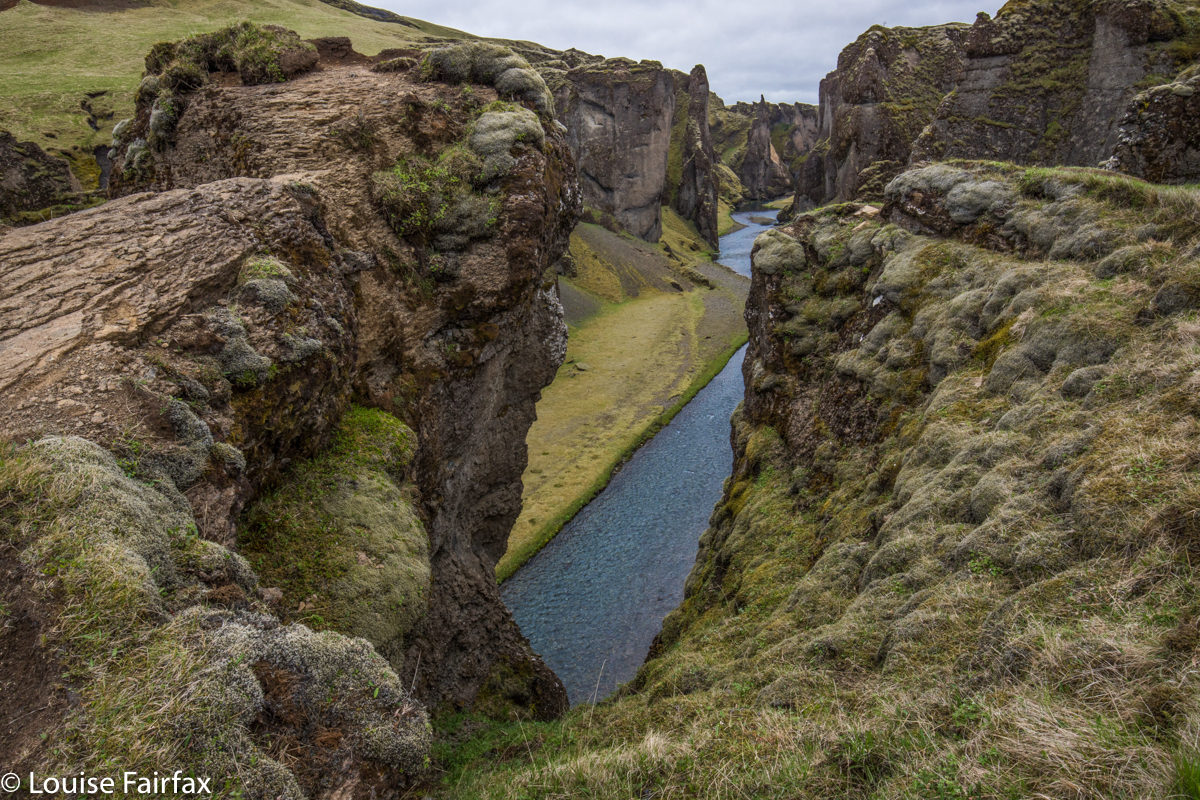
Fjadrargljufur
We had been spoiled up until now, for thus far we had had the privilege of dancing on the abyss to our heart’s content, going to the brink of infinitude, but being allowed to determine for ourselves (and with a strong desire to live in mind) our own level of risk-comfort. Here, all independence and self-direction was removed. This was a tourist site, complete with wide, smooth, tarred trails, railings, keep out signs and a million warnings telling us that if we leap four hundred metres, we will surely die a the end of the flight. It even had a dragon lady at the start to remind you to stay on the trail and other suchlike rules.
We did not enjoy this level of supervision or removal of our autonomy. We walked to the end and back unimpressed, but now I am home and can see my photos, I do have to admit that this place is very beautiful, and that the tourists do need to have somewhere to go. Much better to channel them all into something like this and let the rest of wilderness be wild. And if you are going to have crowds all chatting to each other and skylarking around while they take their selfies, heedless of those around them, then you also need to keep them away from dangerous edges.
I am terrified in the presence of people who seem unaware of their surroundings, as I have been bumped nearly into oblivion by such people on more than one occasion. Better to save cliff edges for solo or near-solo efforts. So, here is a sacrificial pawn serving the tourist industry, conserving the people from their own irresponsibility. Such pawns are necessary.
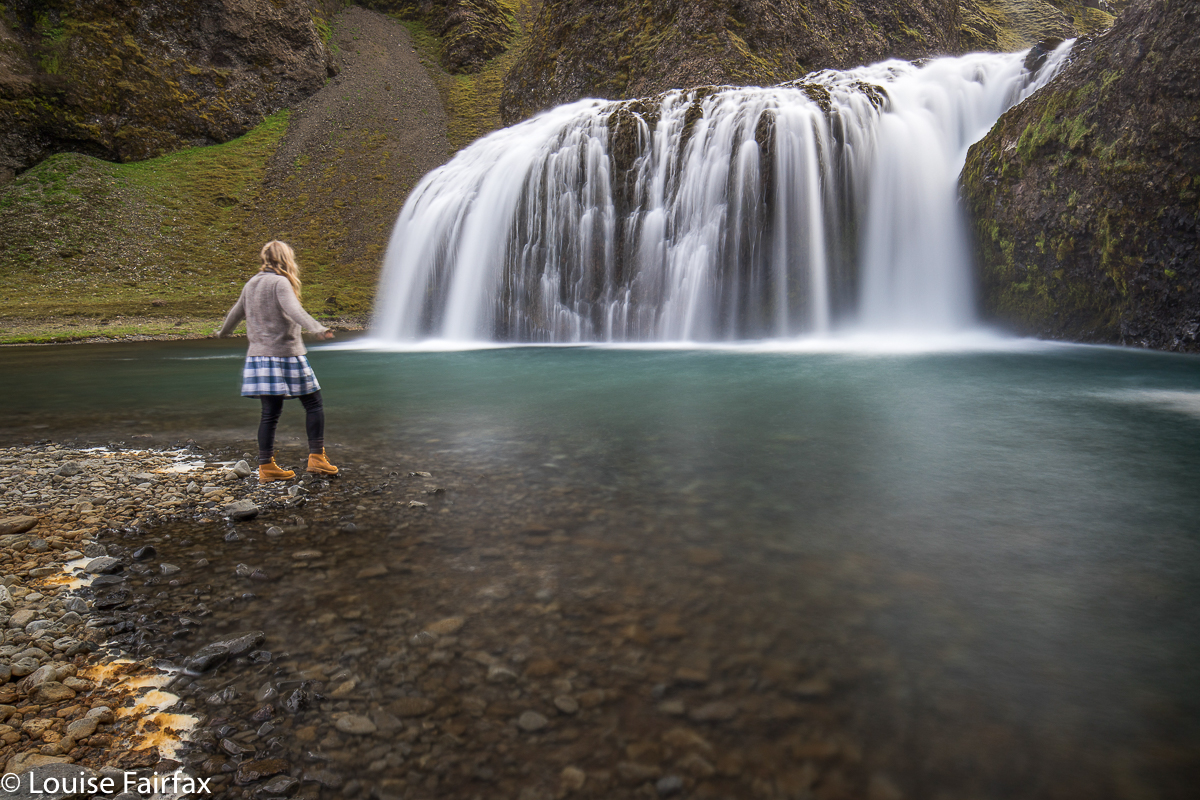
Next marvel on Timea’s list was a turquoise waterfall by the name of Stjornarfoss. Here is Lena, deciding whether or not to take a swim at about 4 degrees.
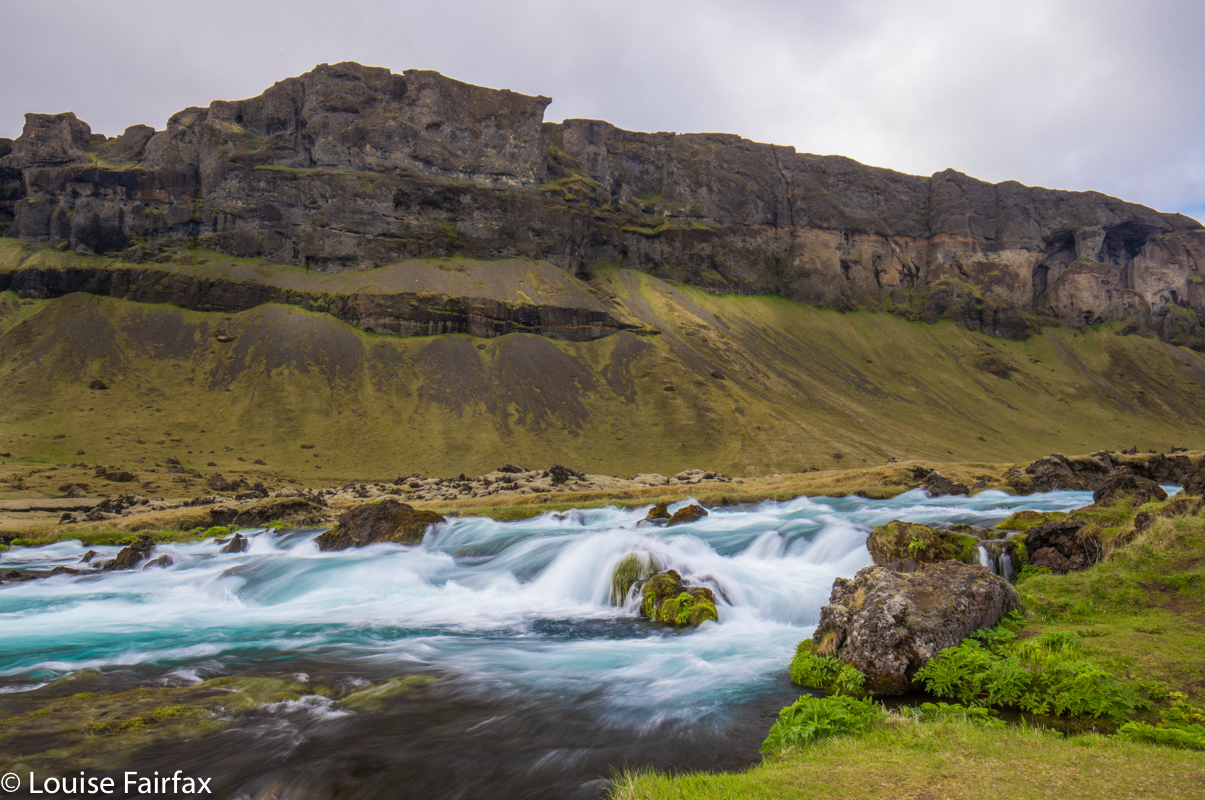
Our next “falls” were not on anybody’s list, and neither were they named. They had little height, but made up for it with massive colour and breadth. We found them utterly charming, so I slammed on the brakes and out we hopped. Now, we get pretty involved once we’ve set up our tripods and thoroughly immerse ourselves in the nature we are capturing. We are at one with it, and tend not to notice extraneous objects, like a farmer wanting to shoot us, an approaching bull with smoke issuing from its nostrils, or a mob of forty tourists who decided that if these two people with tripods were were shooting it, then it must by definition be good. In this instance, it was the third of these that happened. When we “woke up” from our trance of being soaked in beauty, we noticed to our complete amazement the very large number of people who had gathered to shoot this nameless wonder.
On the way during the remaining drive, we found some more Icelandic horses,
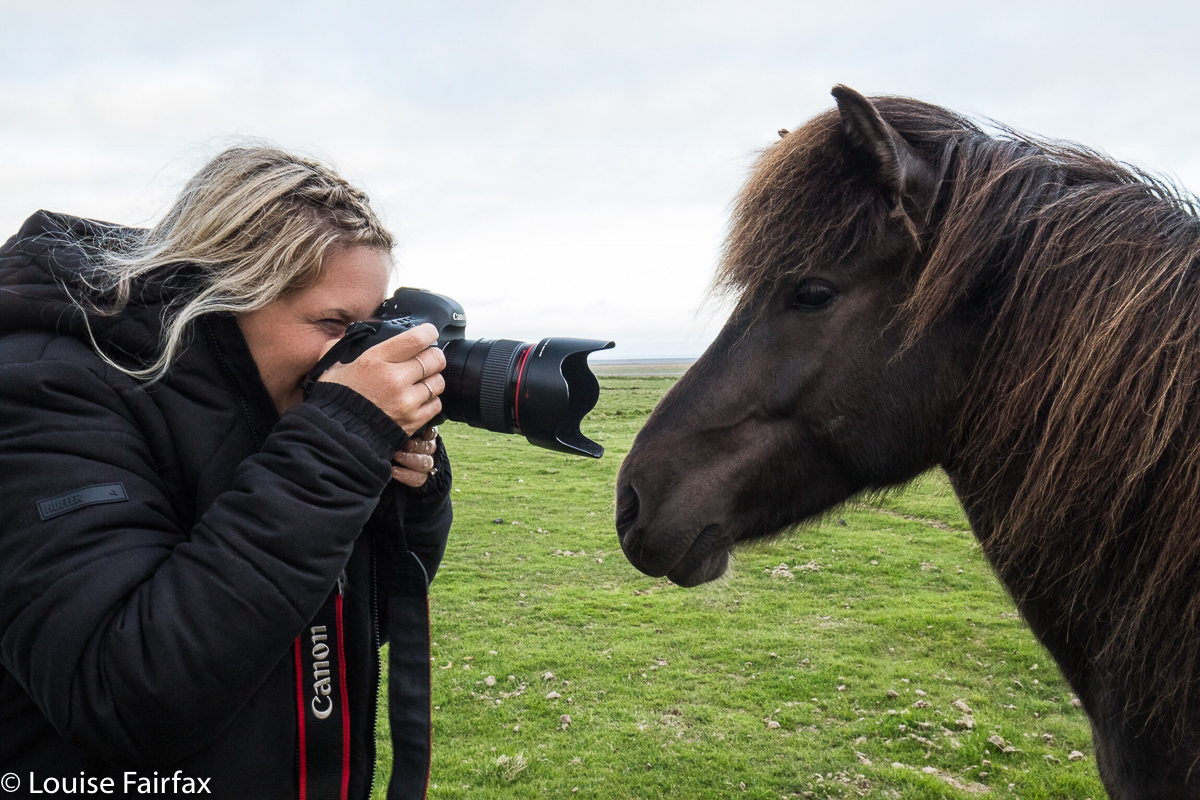
one of whom photo-bombed Lena, who, the horse felt, was discriminating unfairly in the favour of blondes and brunettes, and shamelessly ignoring dark-haired beauties like her.
I was a little tired by the time we arrived at Vagnasstadir, where our Youth Hostel was. I was so tired, I even wanted a bit of a nap before I threw myself at more driving and another long sunset stint. We had no room yet, and I relaxed on the couch waiting for permission to enter. Off I dozed. I needed it.
Maybe it’s good that I was fresh when they showed us the room, or I might have been bad tempered. Instead of the two beds we’d ordered, the room had one tiny bed called a double, but double for sticks only. For a mother and pregnant daughter, booked in for three nights, this was really not what we were expecting or wanting, especially considering the price. The view, however, was wonderful, and Lena wasn’t upset, and I guess I was more concerned that she would be cross than that I would be. If she was happy, so was I , so we made do with this extraordinarily inadequate excuse of a bed in a room that allowed about 30 cms space around its perimeter and laughed our way out of the situation. At least we had a gorgeous view out our big window, and breakfast next day was excellent.
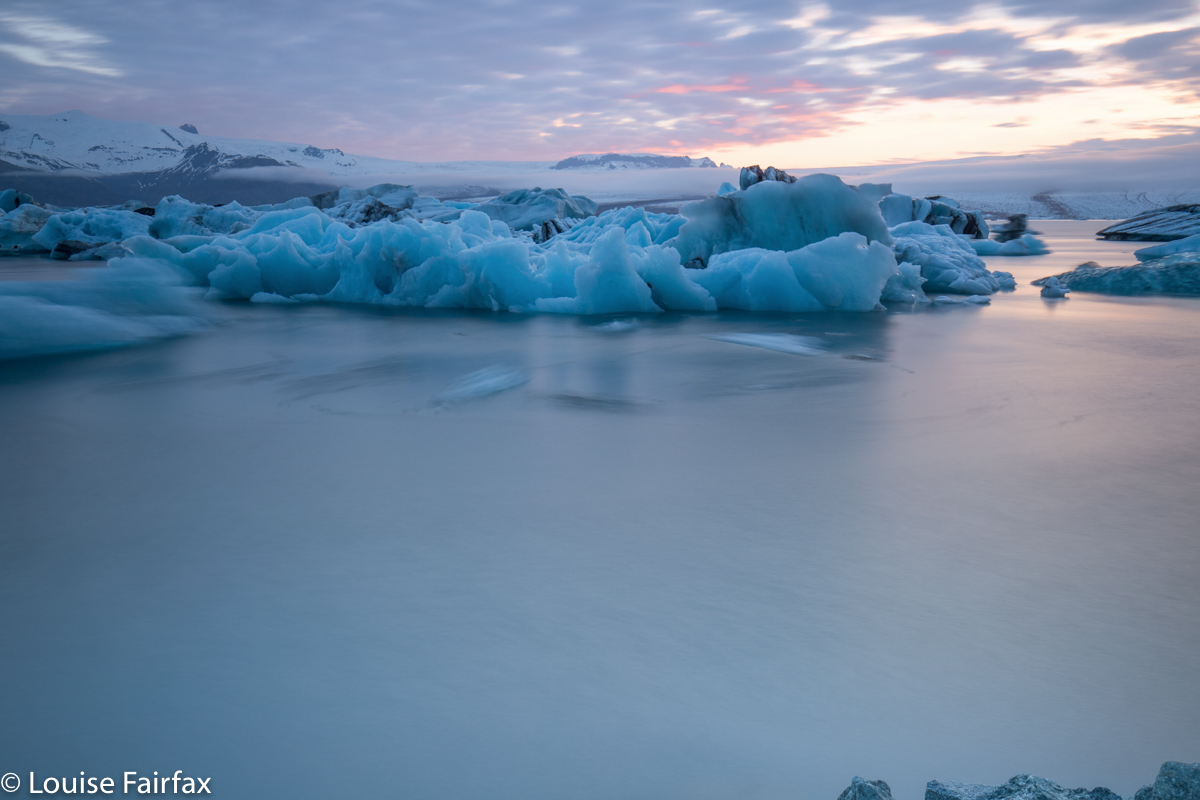
On on we pressed, driving back after this minor setback the 30 odd kilometres to Jokulsarlon to do what I had always so very, very much wanted to do since I saw my first-ever photos of this region: to photograph the ice floes at Jokulsarlon. The first evening was more a learning experience than anything else. I learned that these bergs move, even in a four-second exposure; that they move more if they run across your line rather than towards you; I learned exactly which shutter speeds did it for me so that when I went back on successive evenings, I could do it all better.
Day 6.
This was the first of several days that we devoted to icebergs in one way or another, with short hikes up mountains and visits to waterfalls acting as punctuation marks in the real purpose of the day.
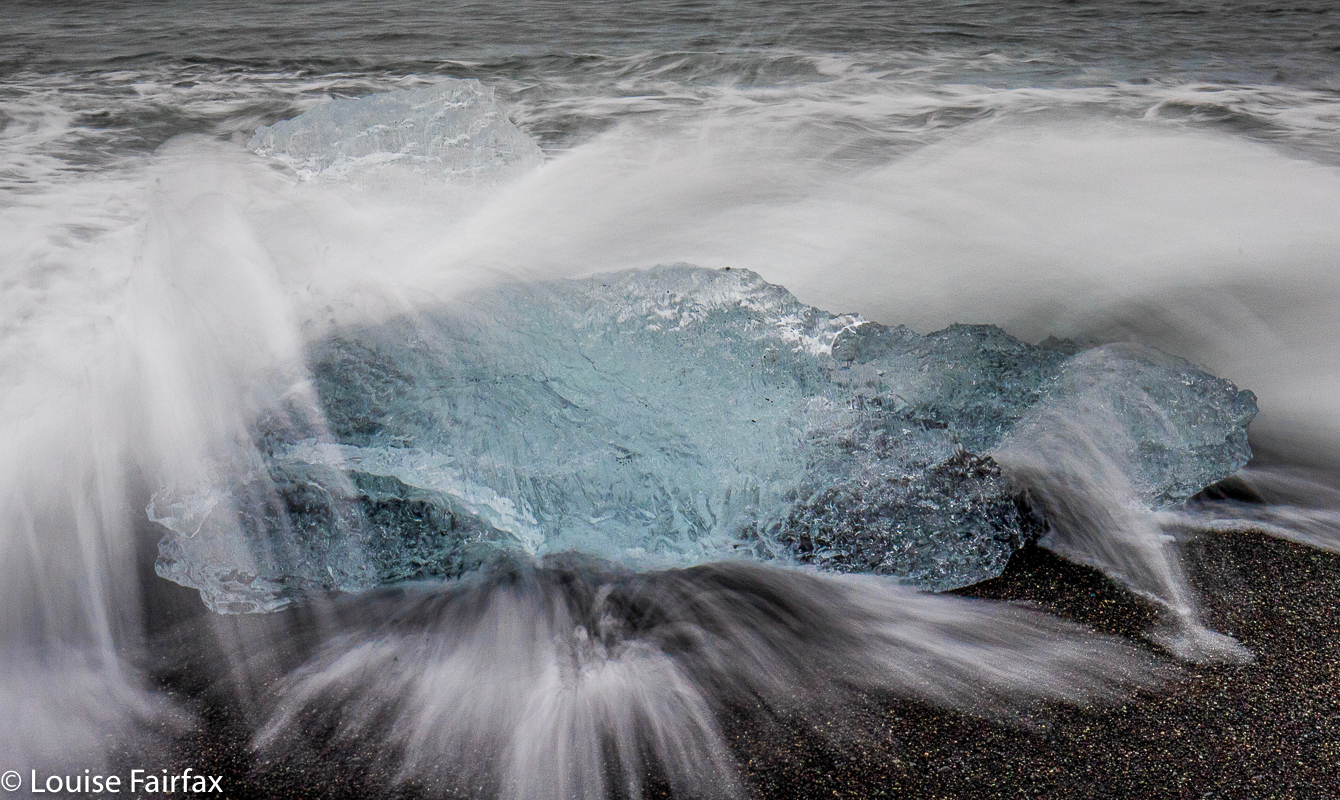
I was impatient to see Breidamerkursandur, or Diamond beach as it is known to those who like to translate everything into English. We had enormous fun playing “What’s the time Mr Wolf” with the waves, and dashing to safety when the waves declared it to be “dinner time”. It was such a lark, and even served as an interval training session, sprinting away from being monstered by a wave, hand clutching a camera attached to its tripod, giggling of course.
Day 7 began with a visit to a “secret” waterfall shown to us by the waiter at Fjallsarlon who sold us soup the day before. Mostly, however, as with the day before, (and apart from some down time in the afternoon, and some walking to this or that spot of natural beauty) our focus was on ice.
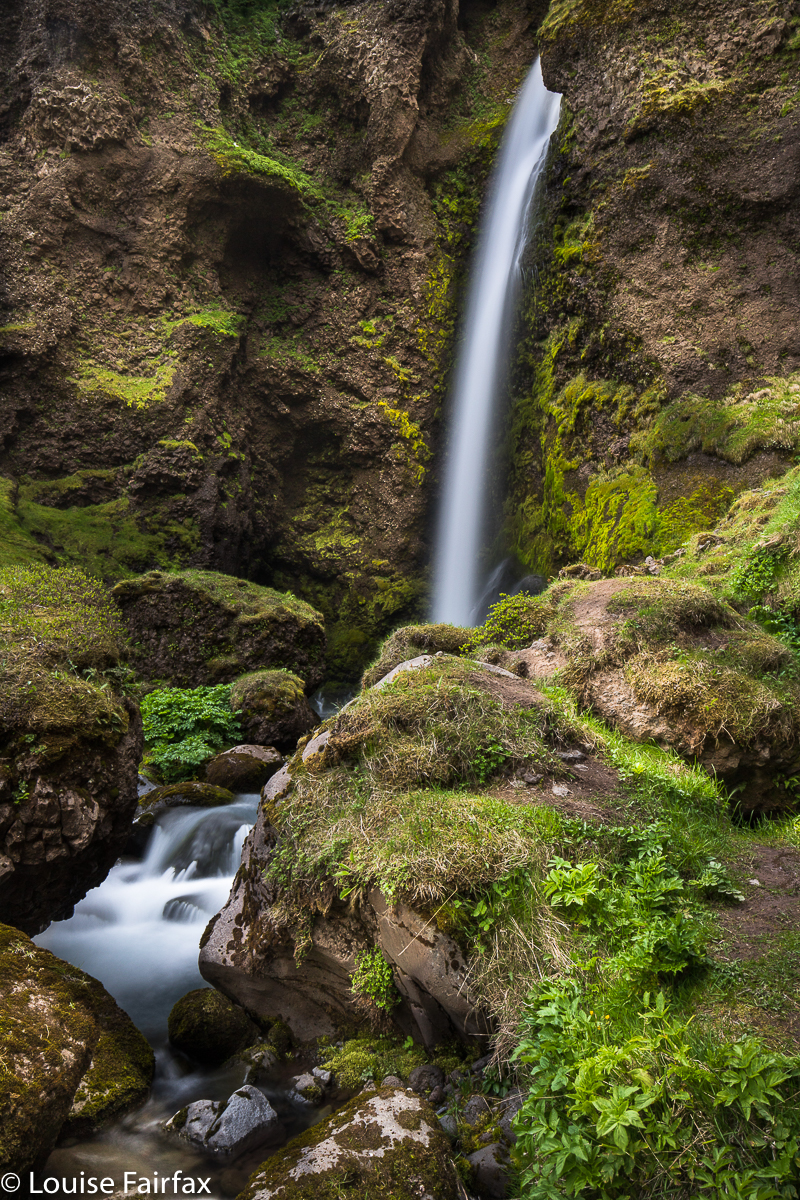
A diversion from ice while waiting for low sun.
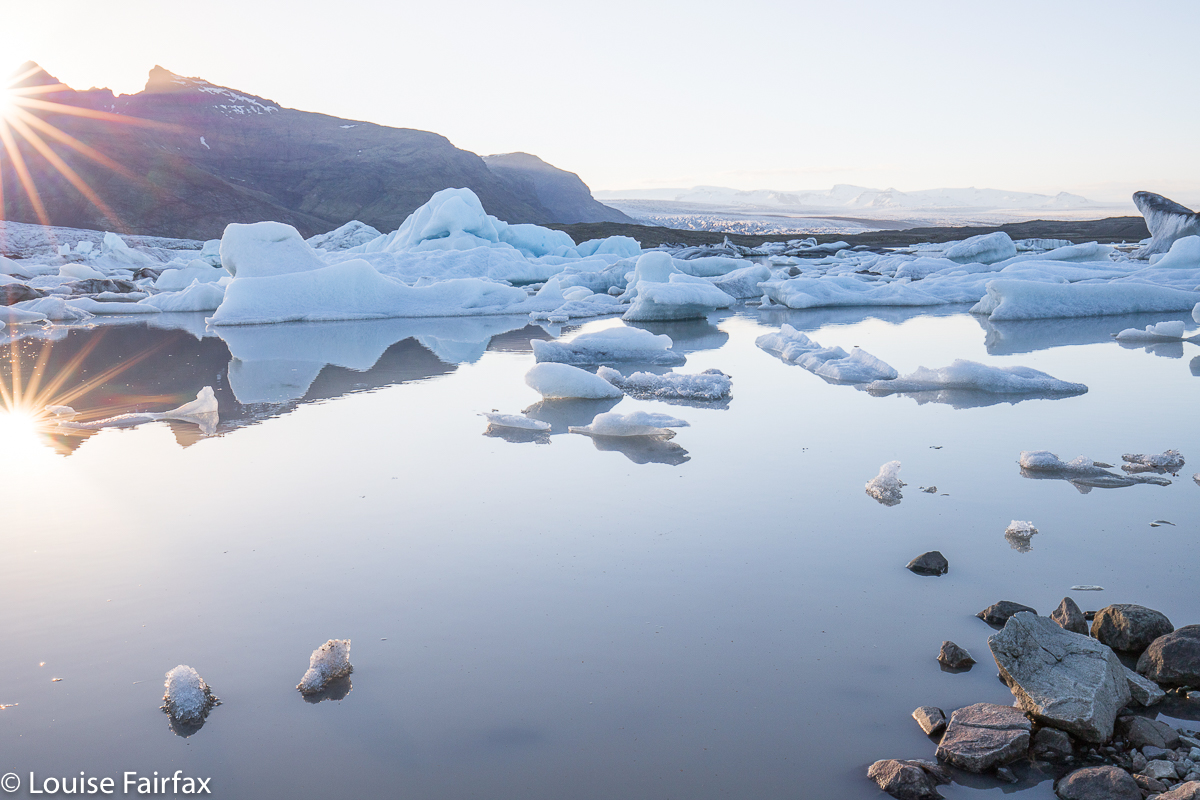
And at last evening came. Jokulsarlon is only one of many lagoons with icebergs, so we enjoyed visiting several of them in these days. We loved the fact that I had designed our trip to involve our spending several days in each location to have opportunities like this.
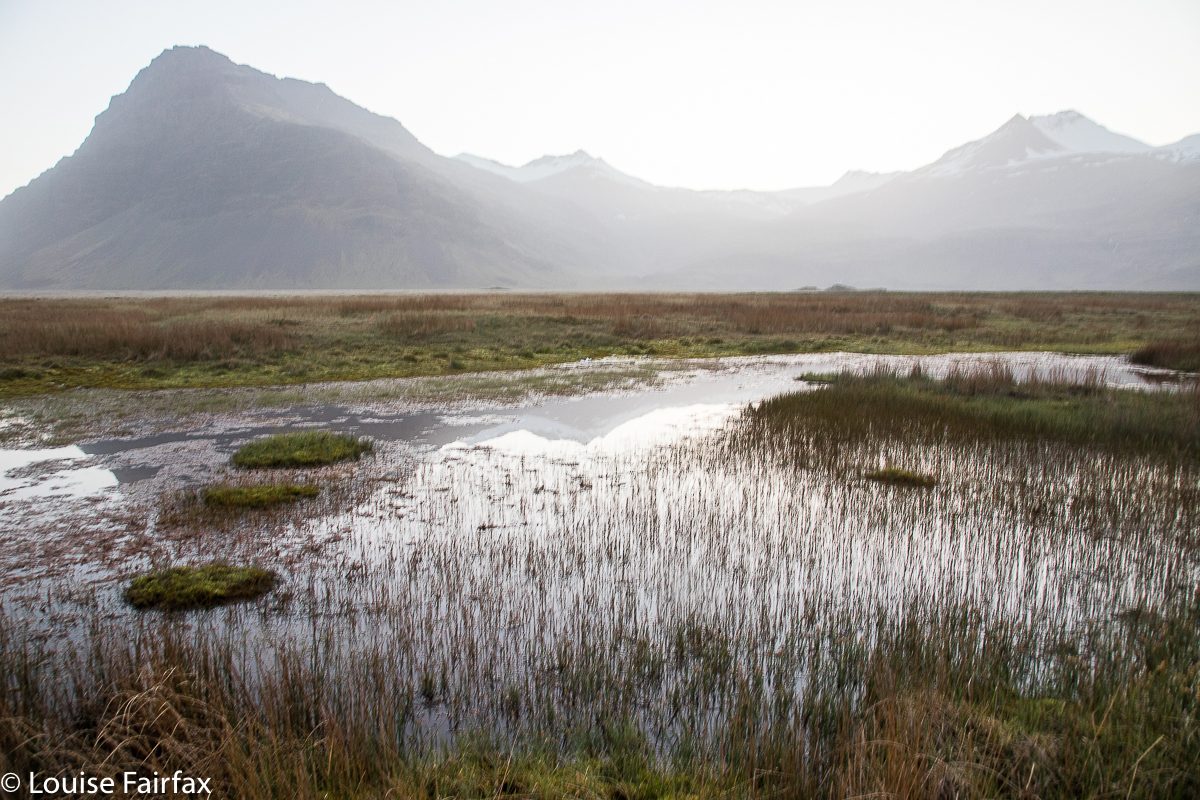
And at the end of each night’s shooting, we had the half-hour drive (a tad under, in fact) back to Vagnasstadir in the marvellous twilight of the midnight zones. We both adored the midnight tones of Iceland. It was such a pleasure and a privilege to be out and about in the middle of such beauty.
For part 3, the link is
http://www.natureloverswalks.com/iceland-2018-3/
